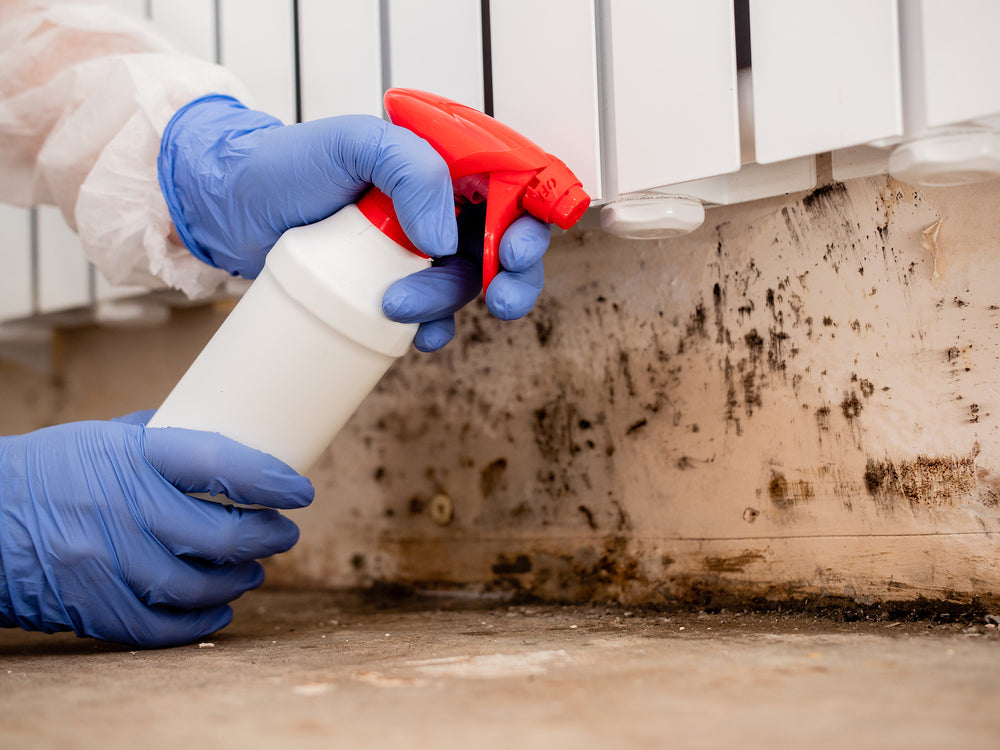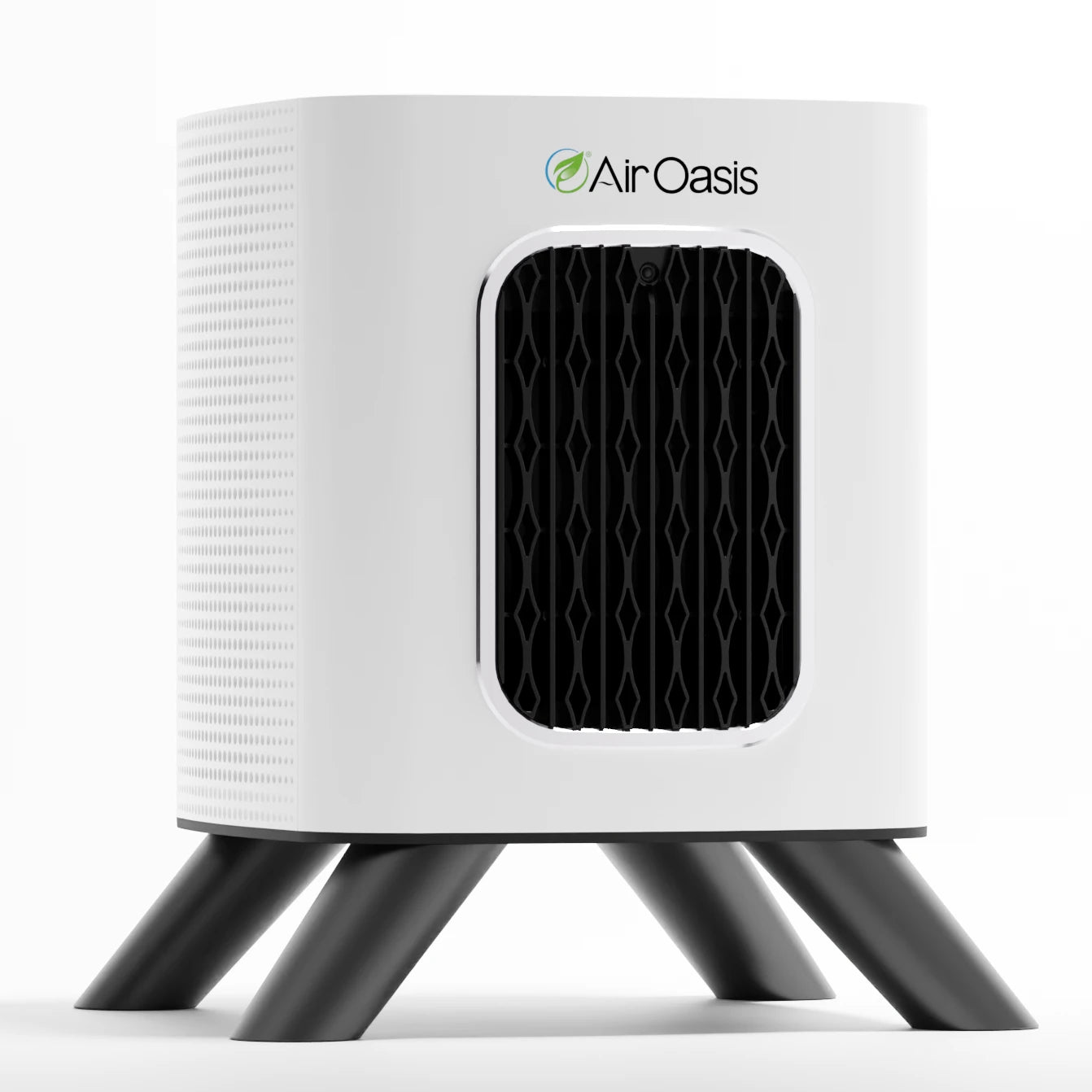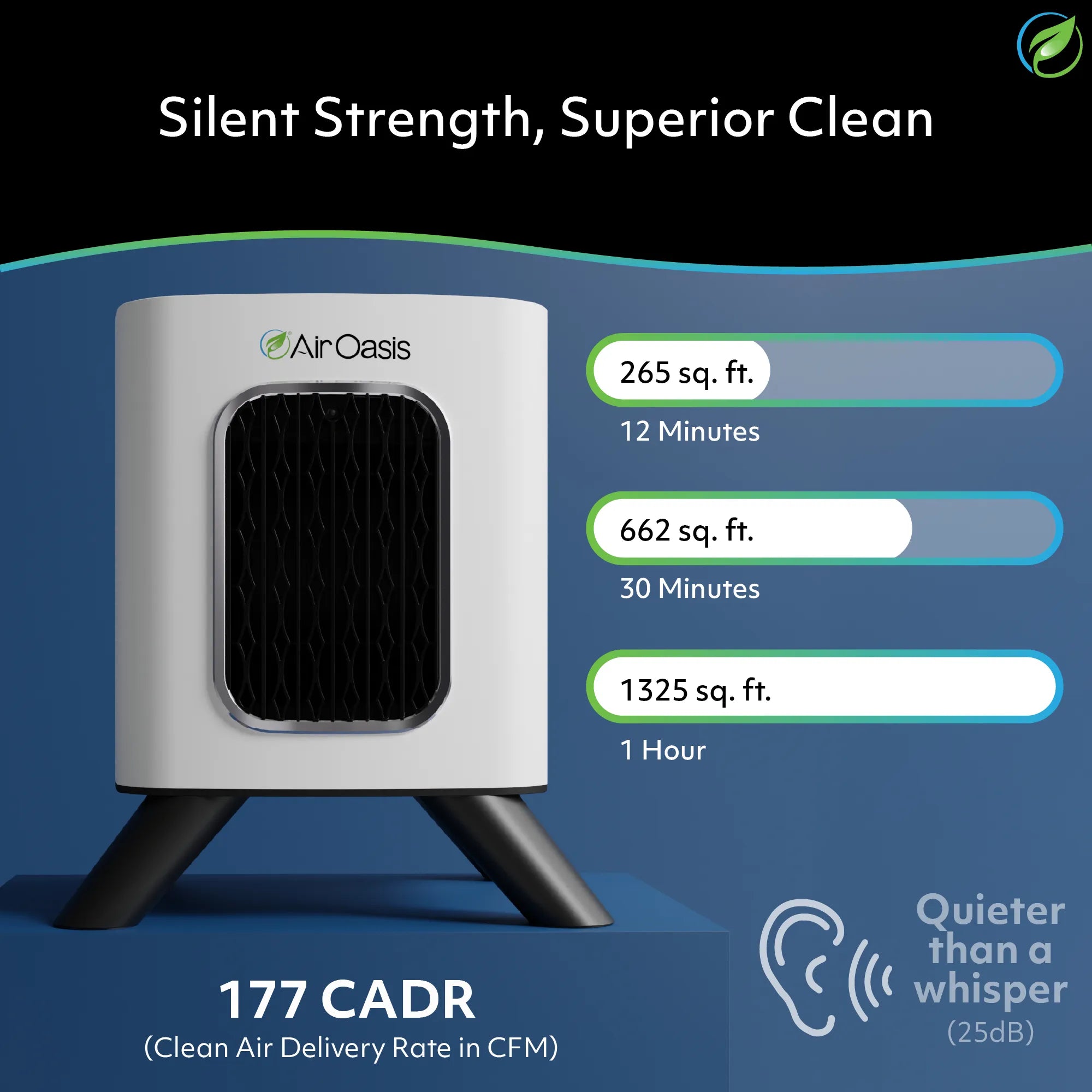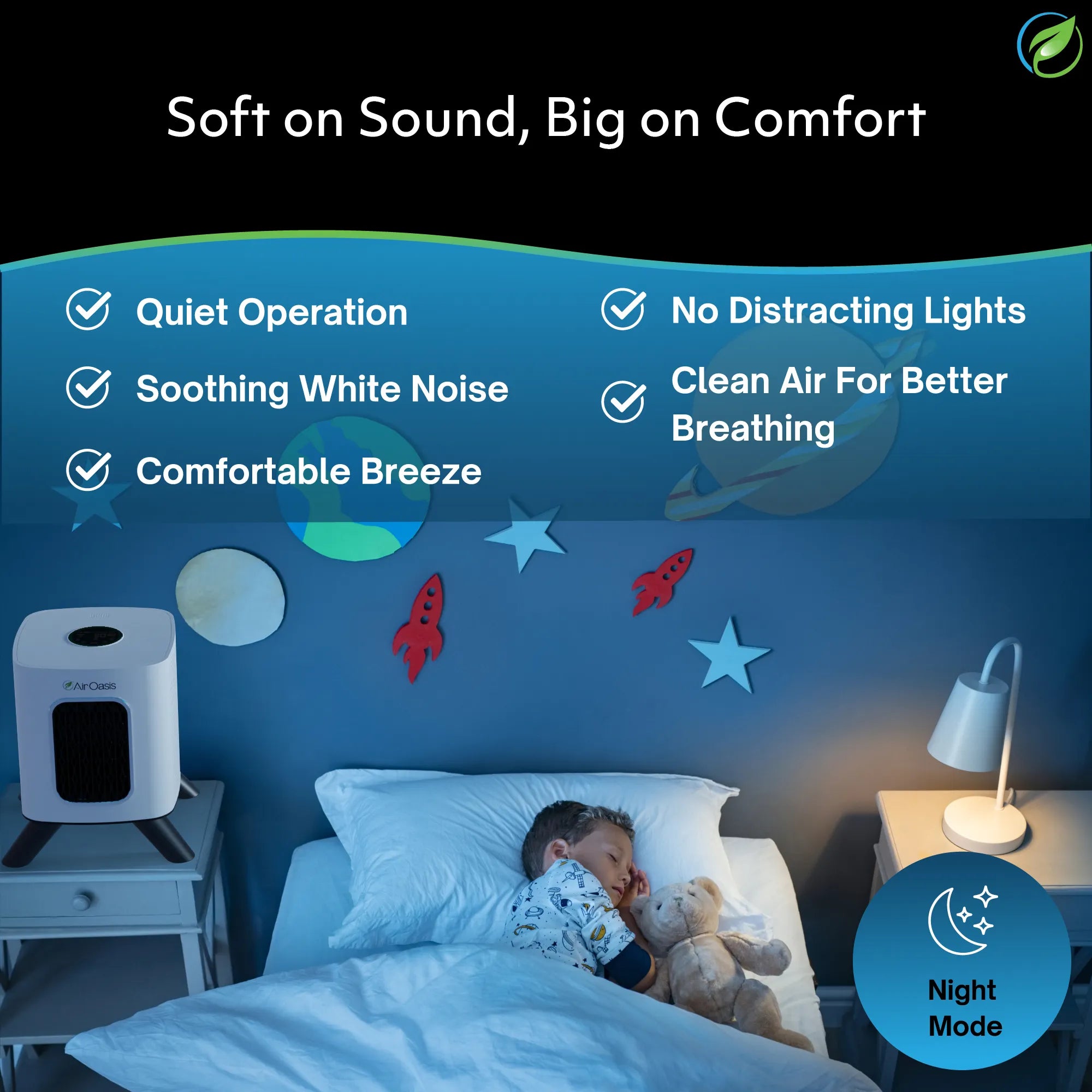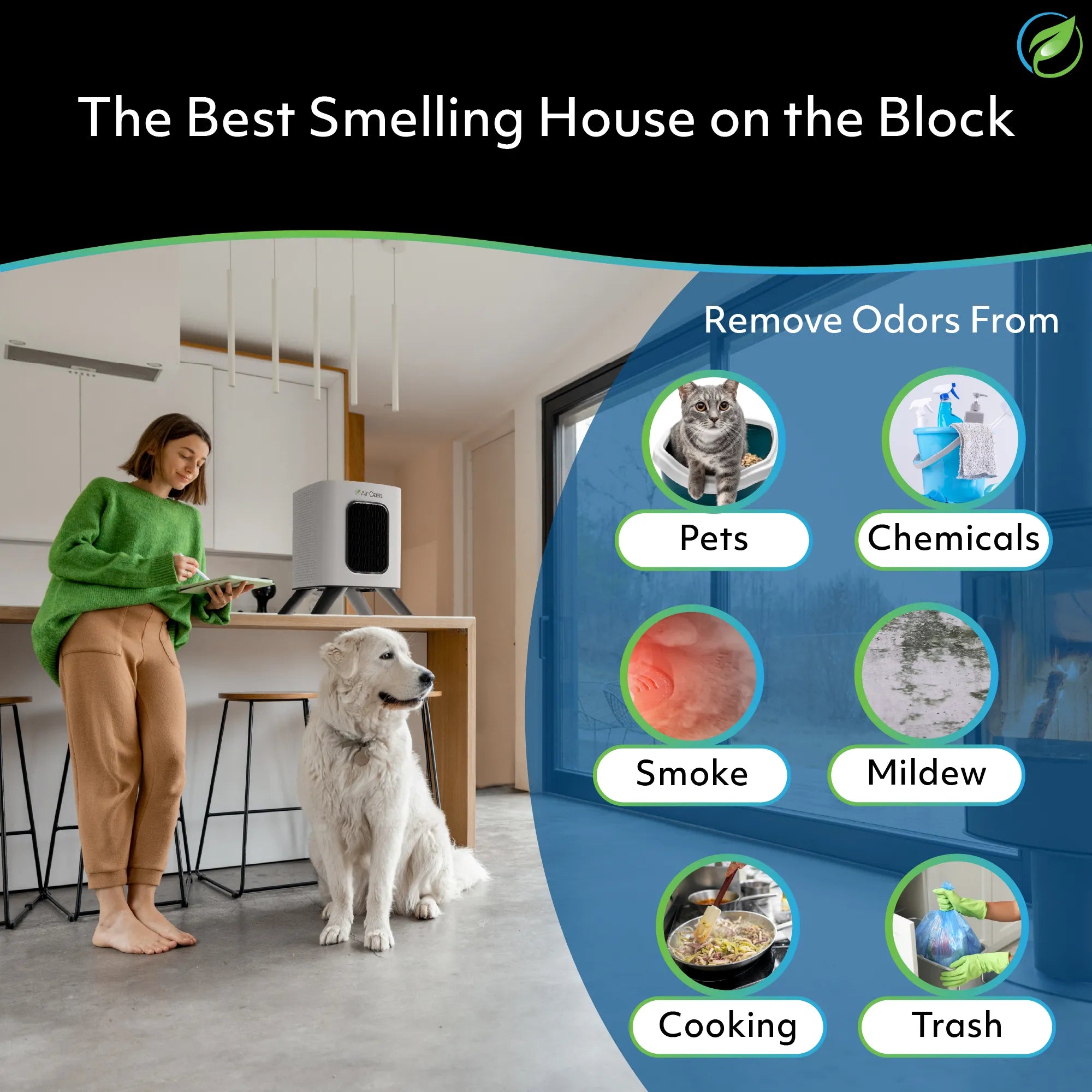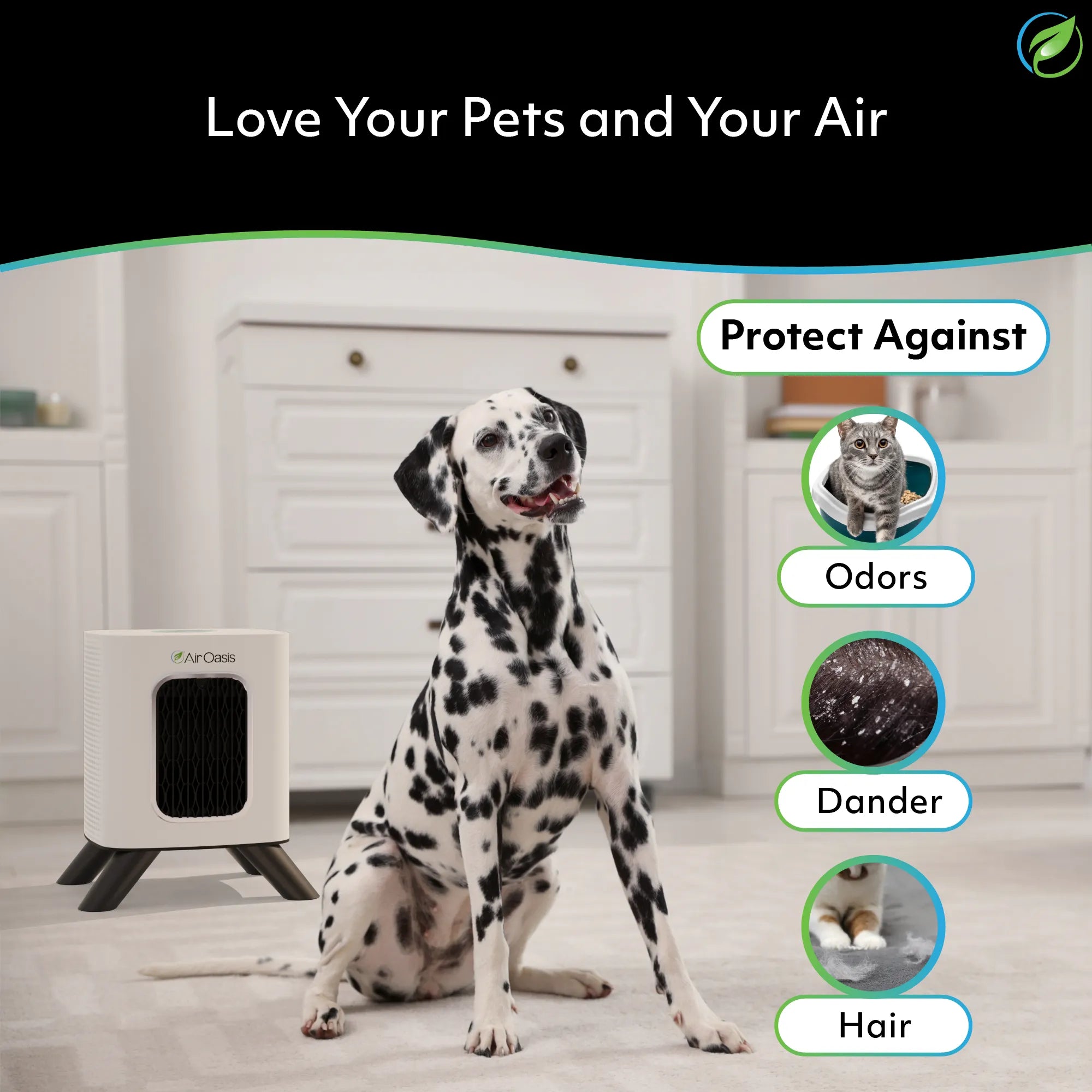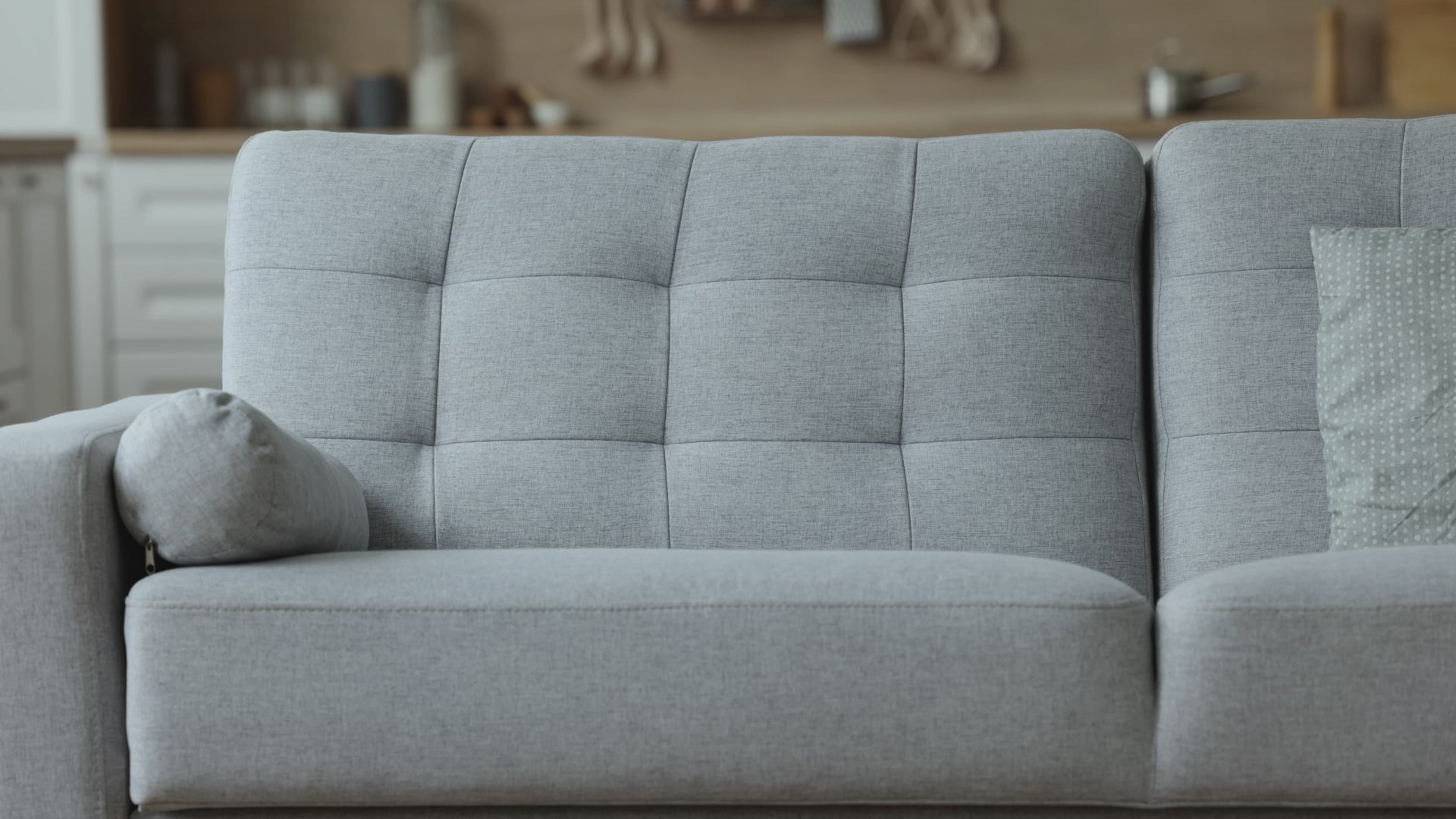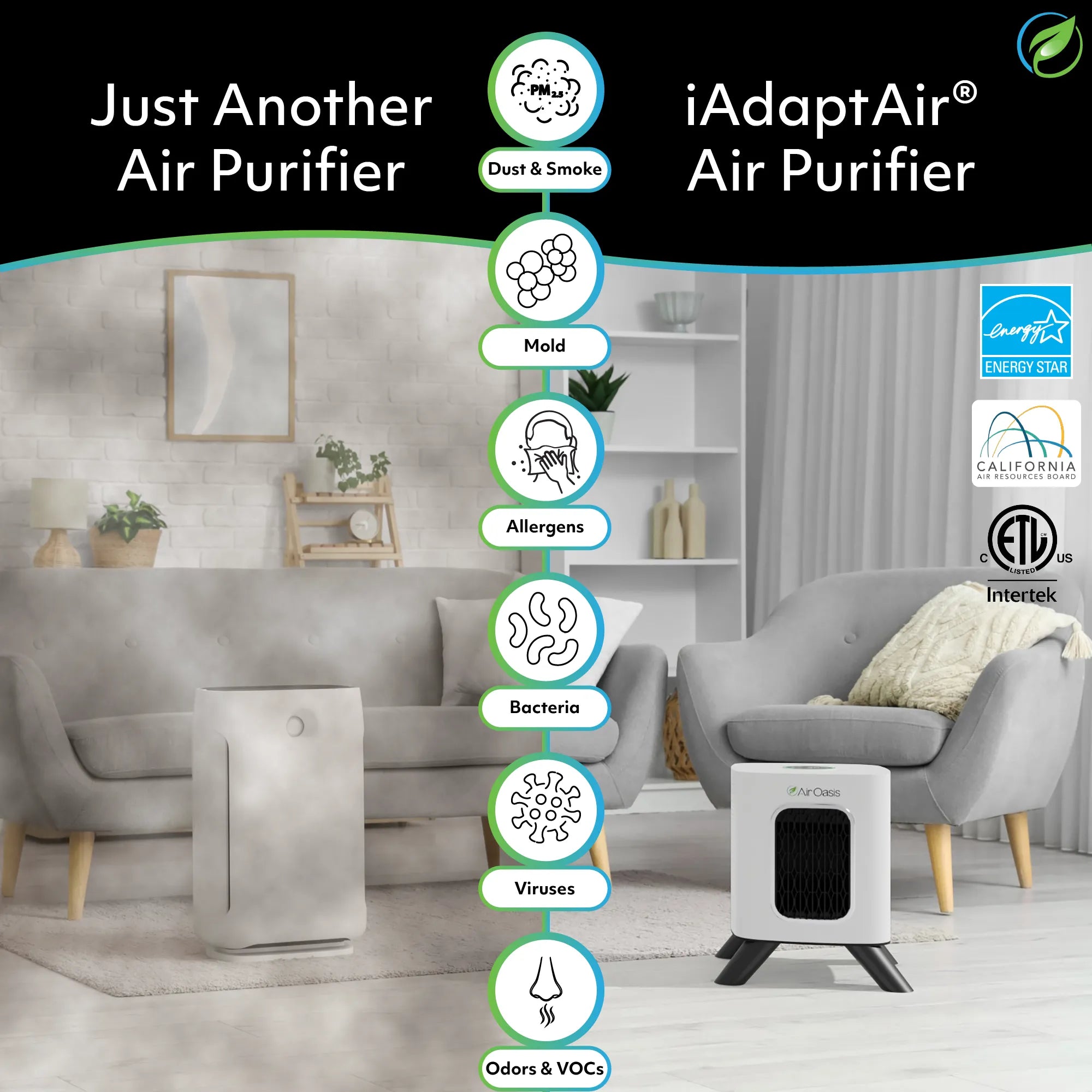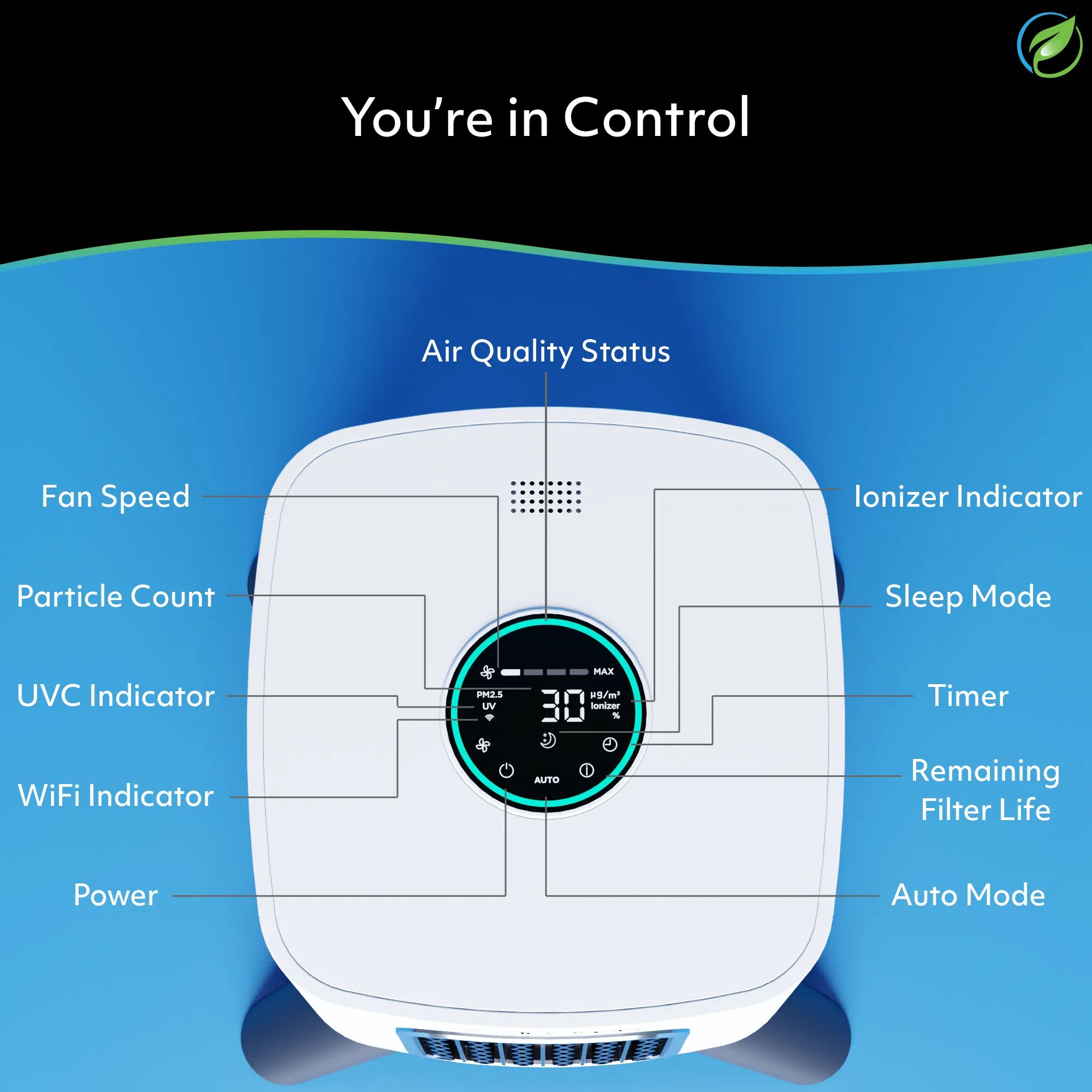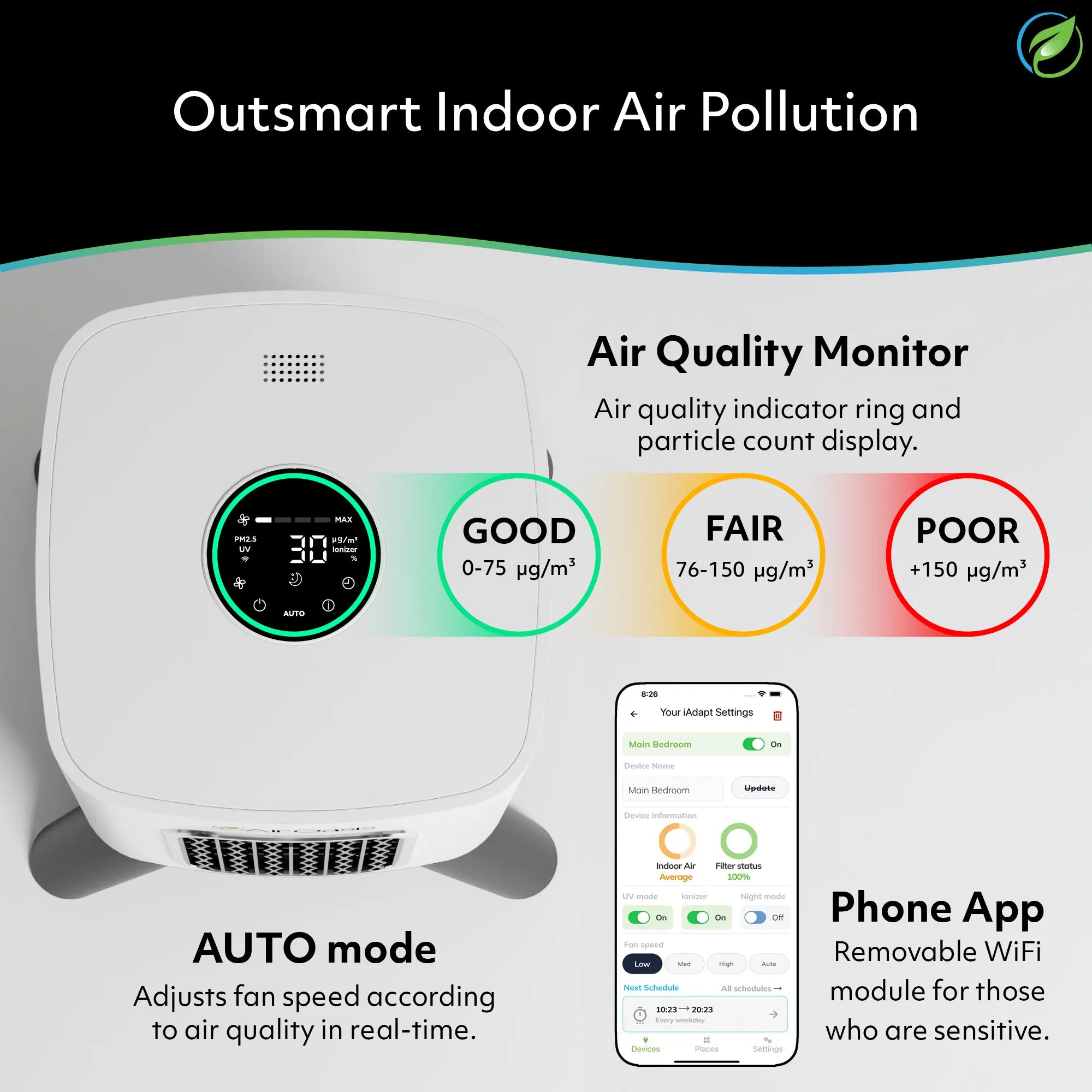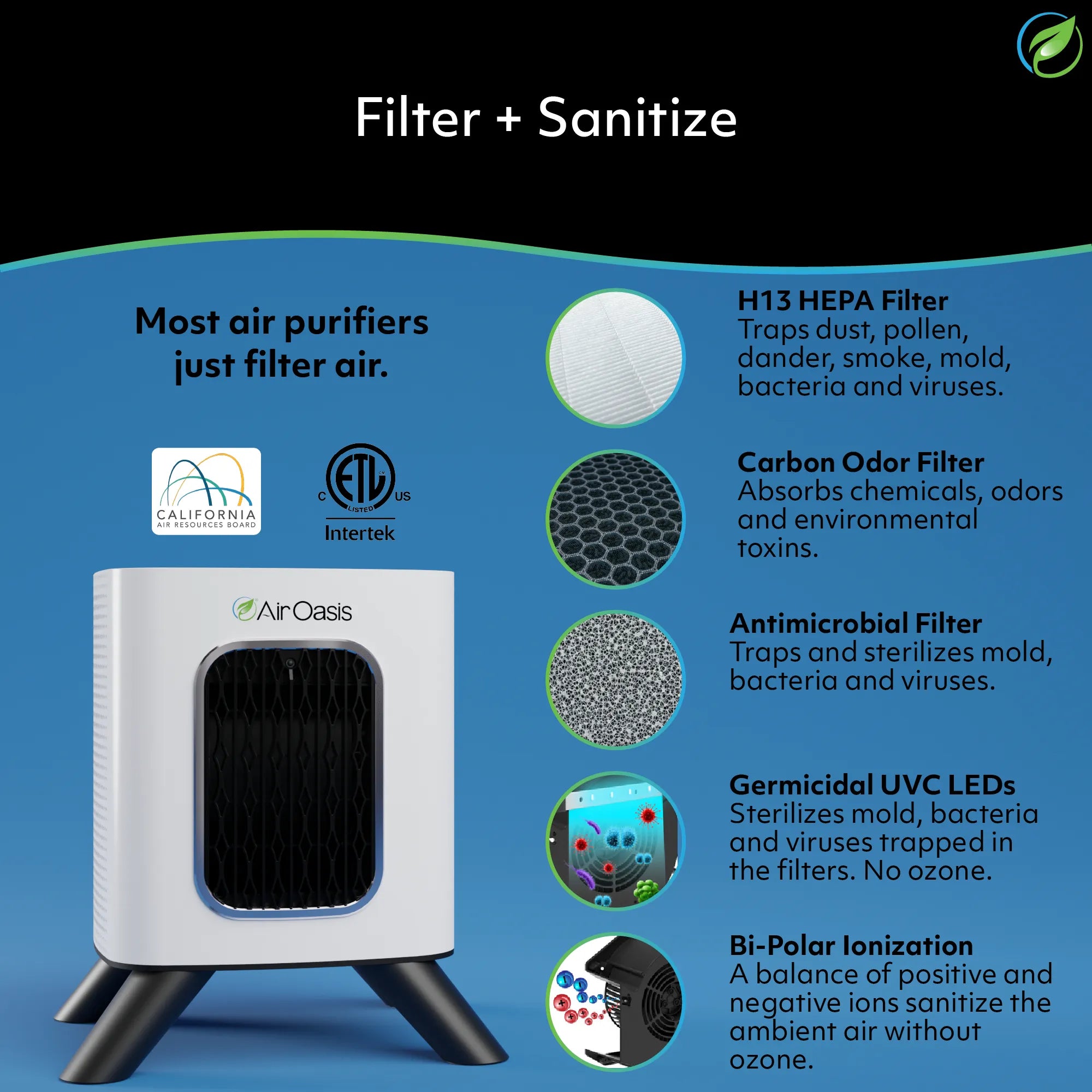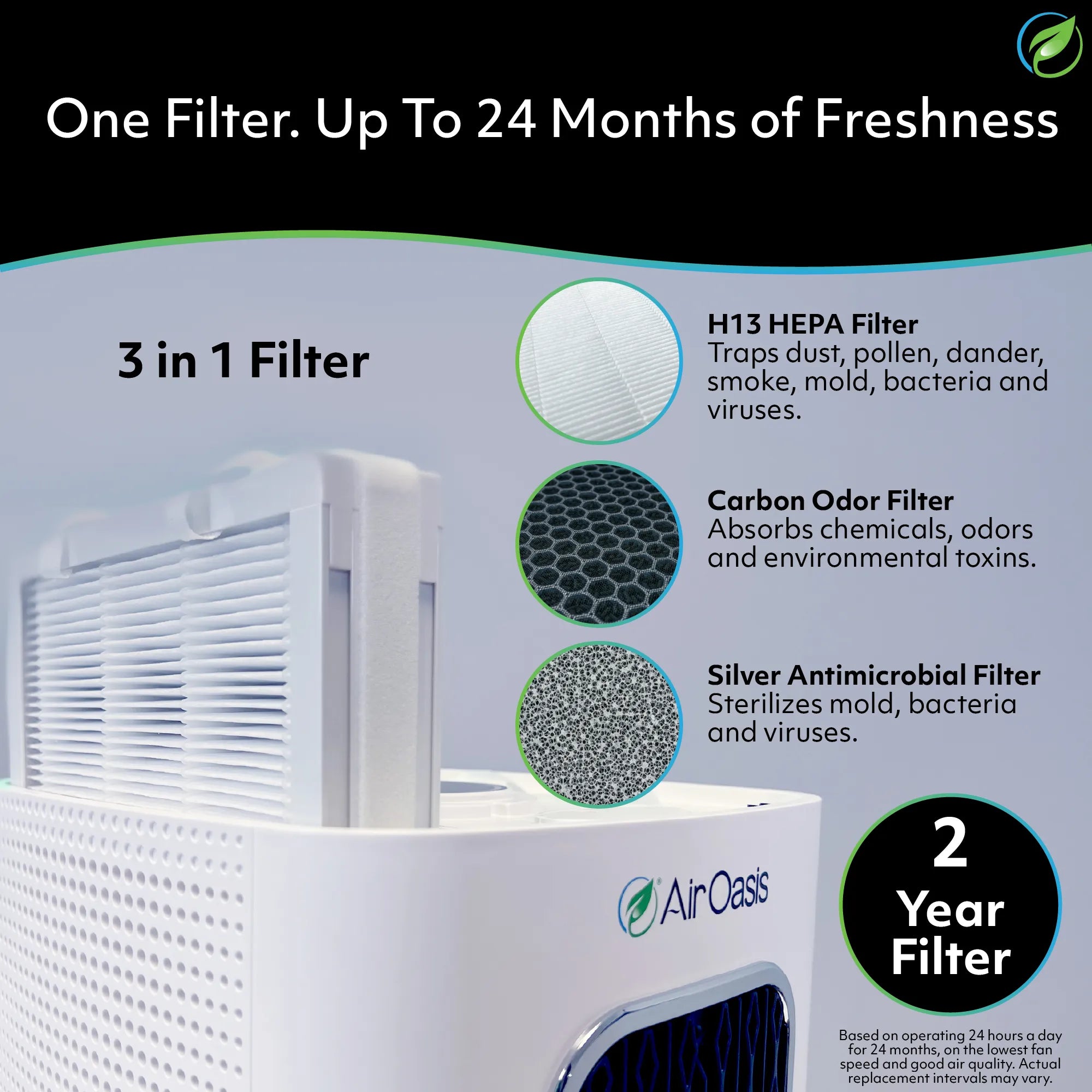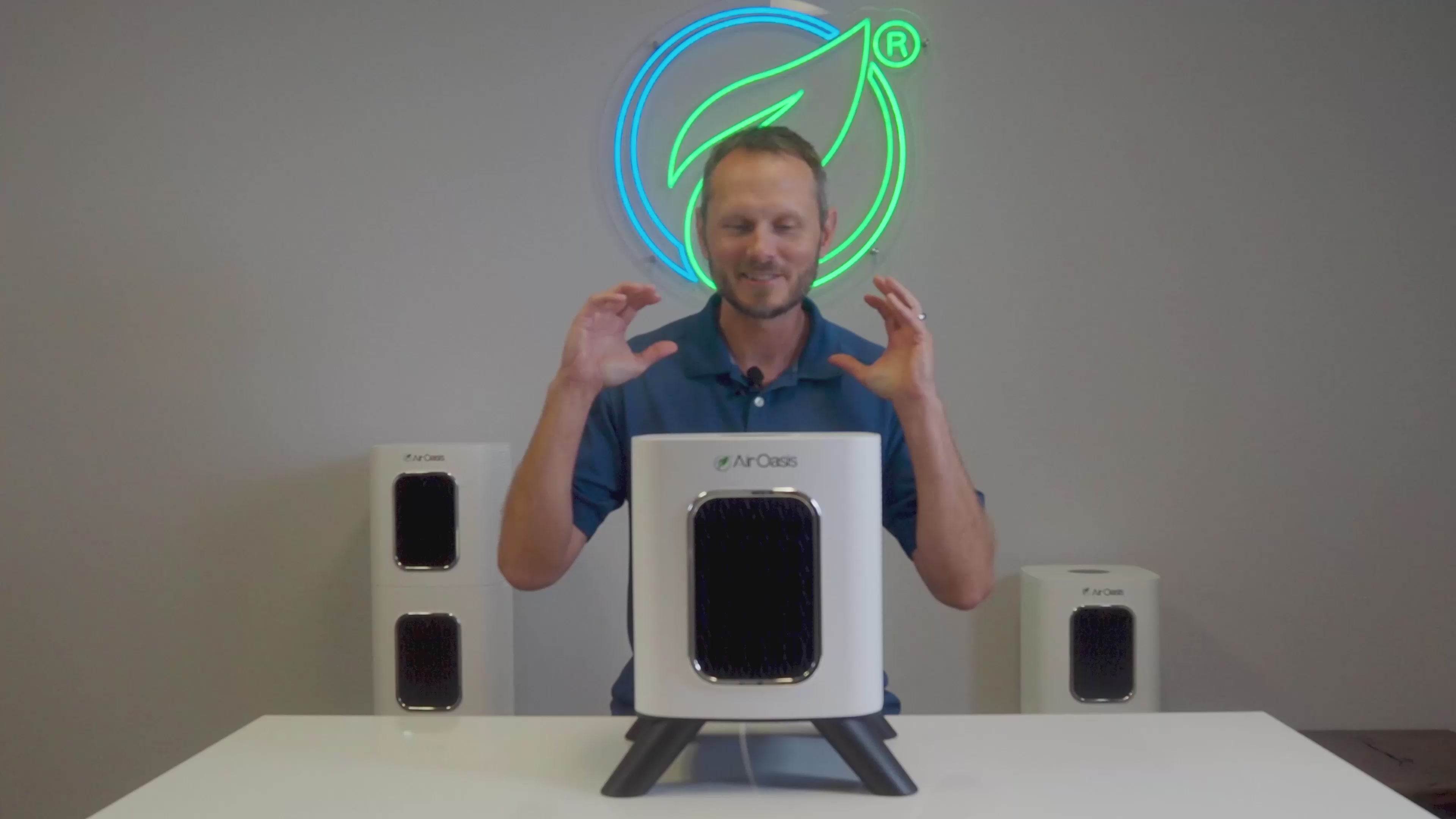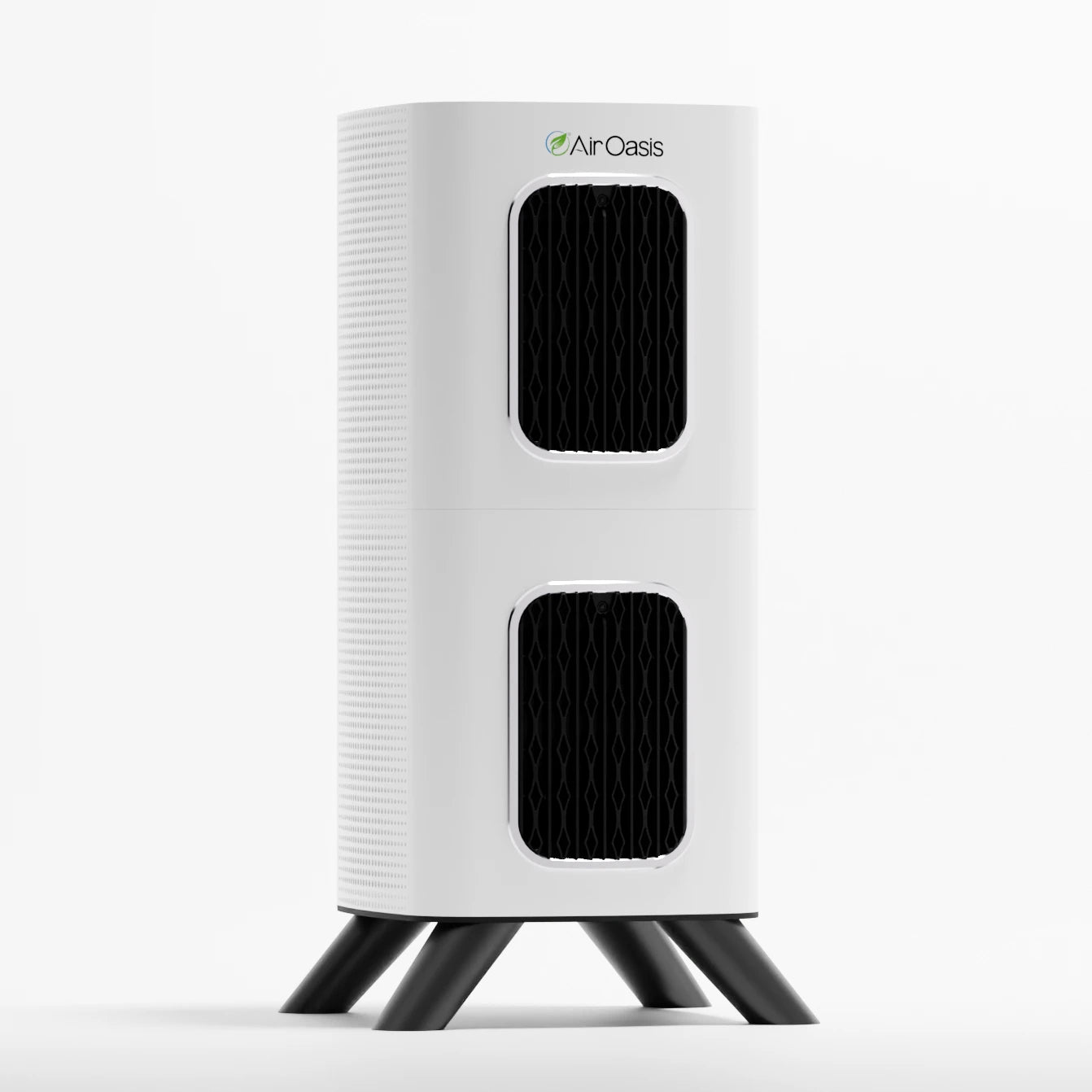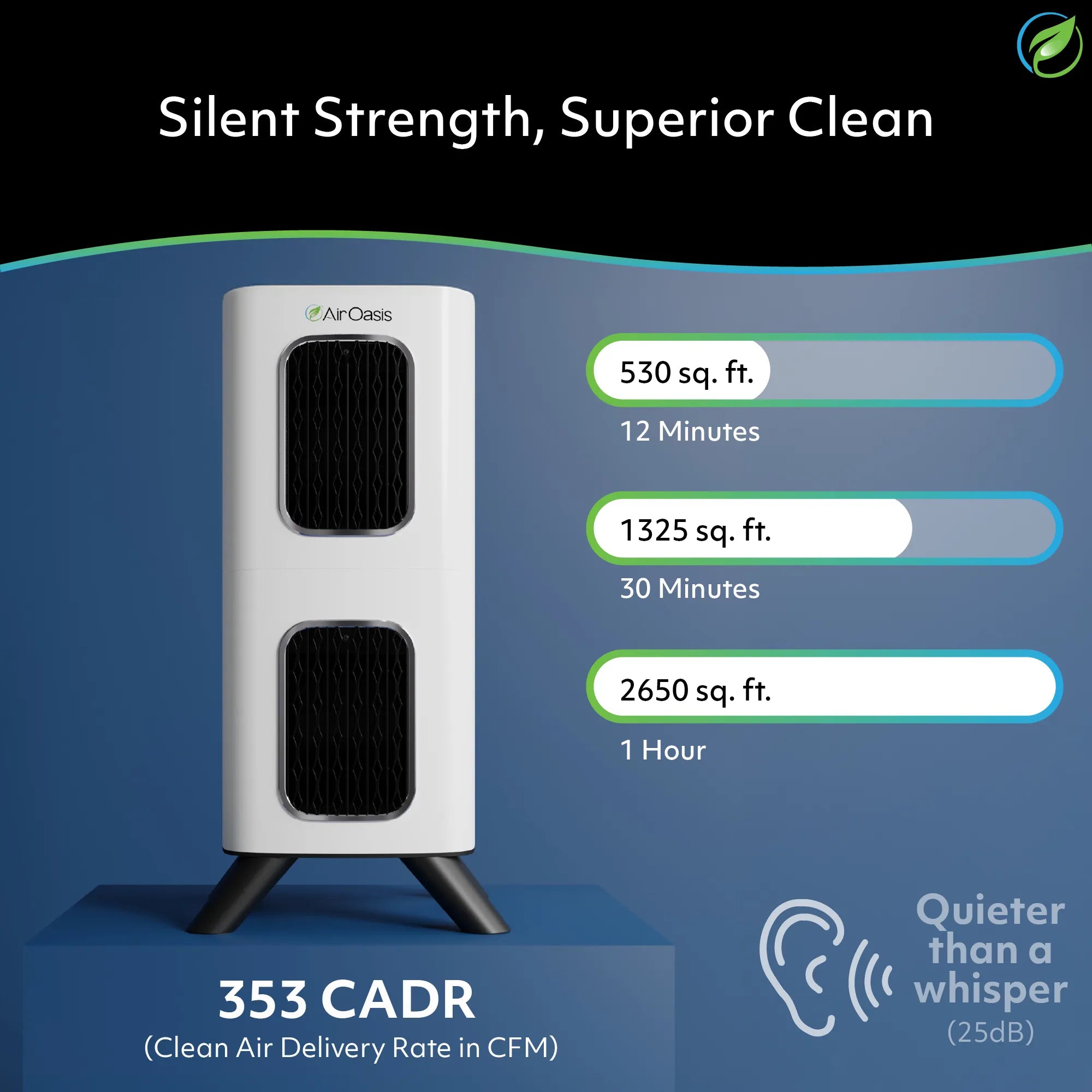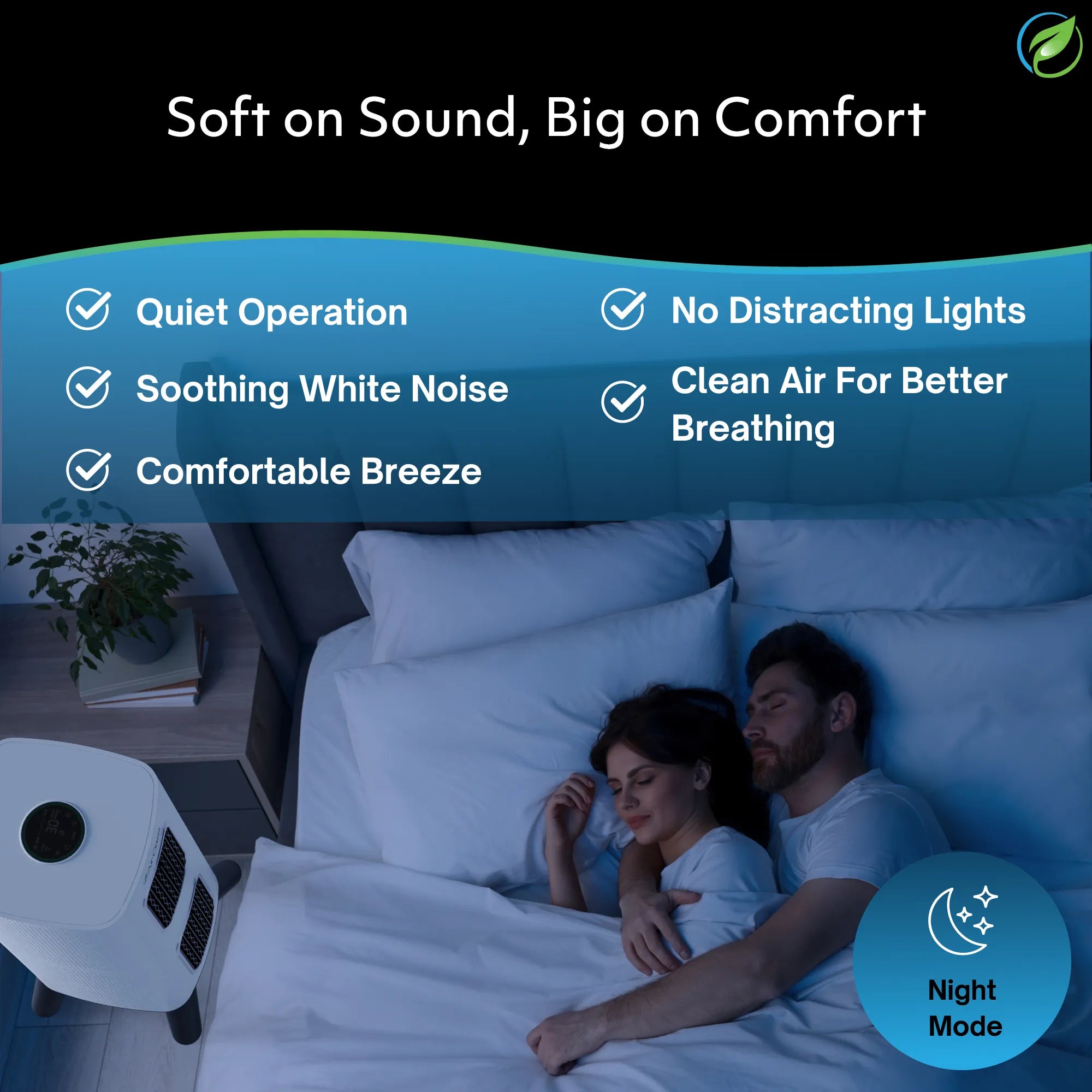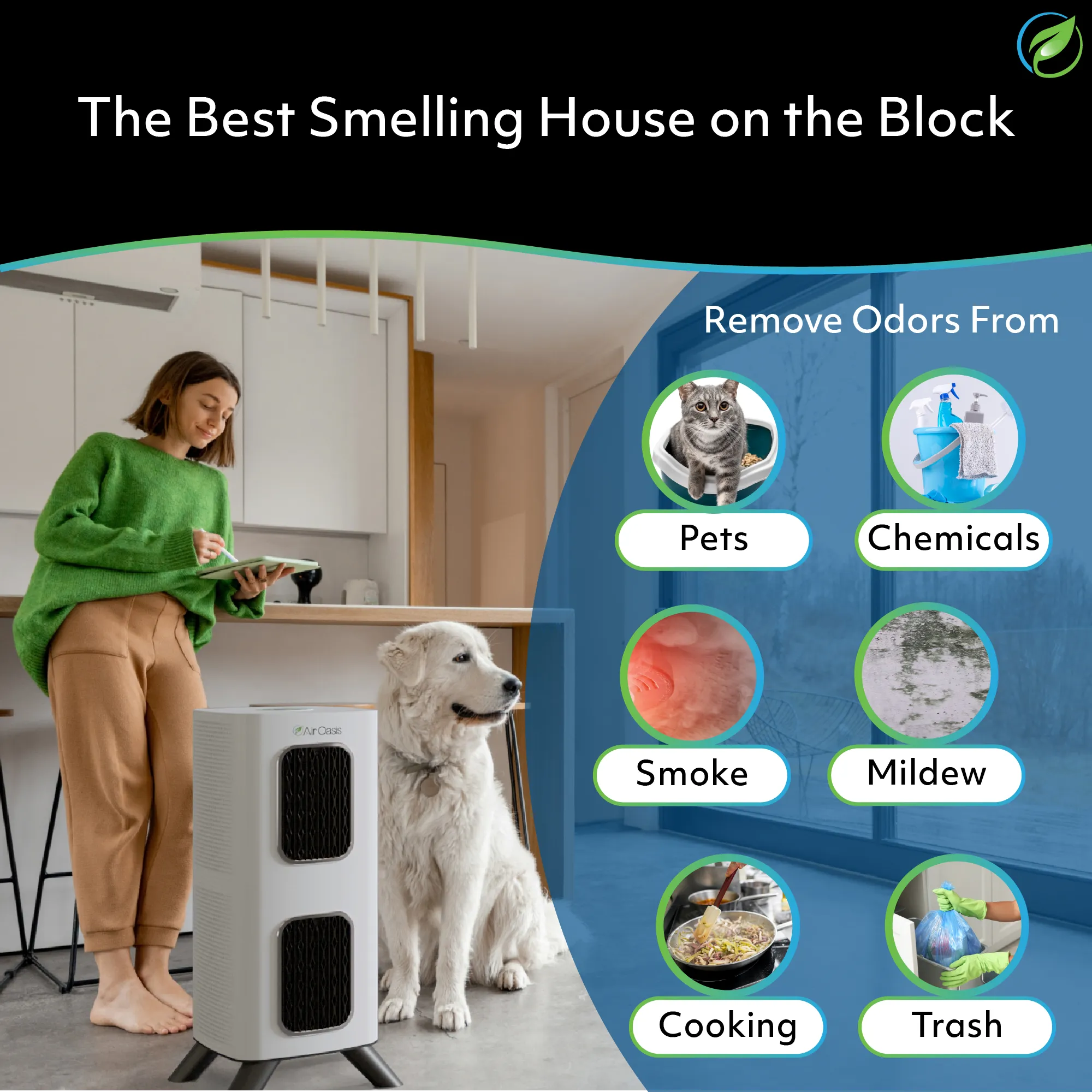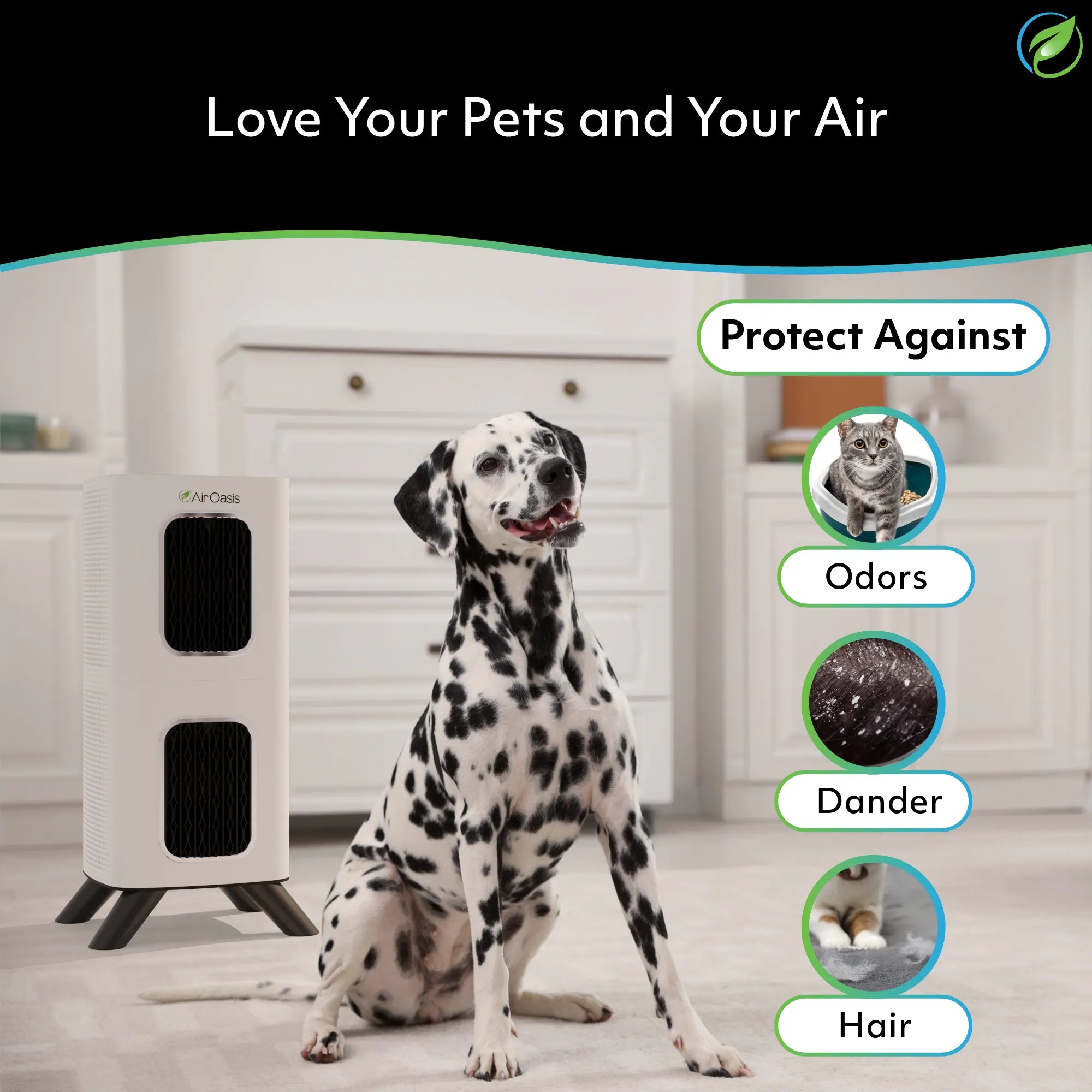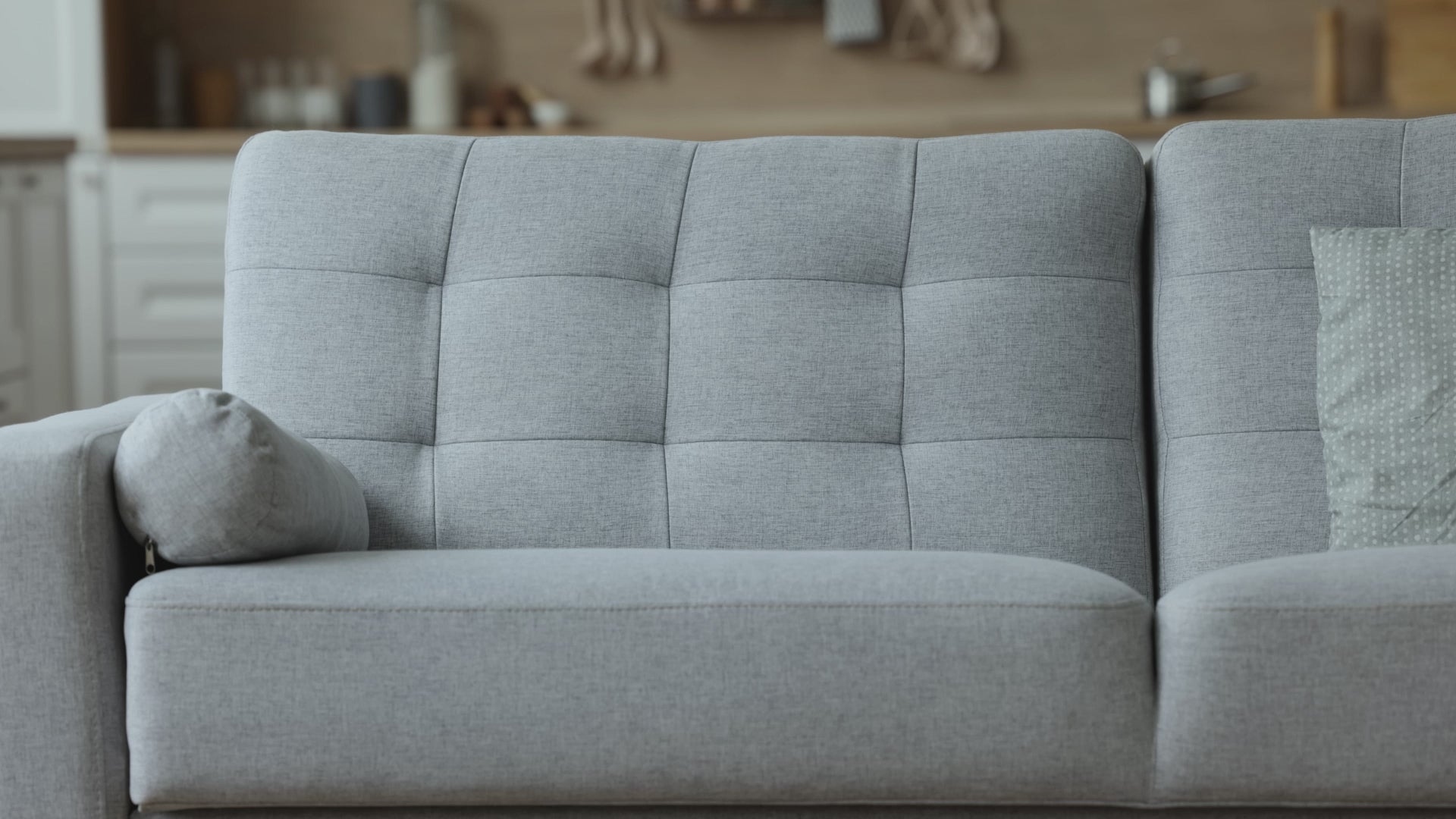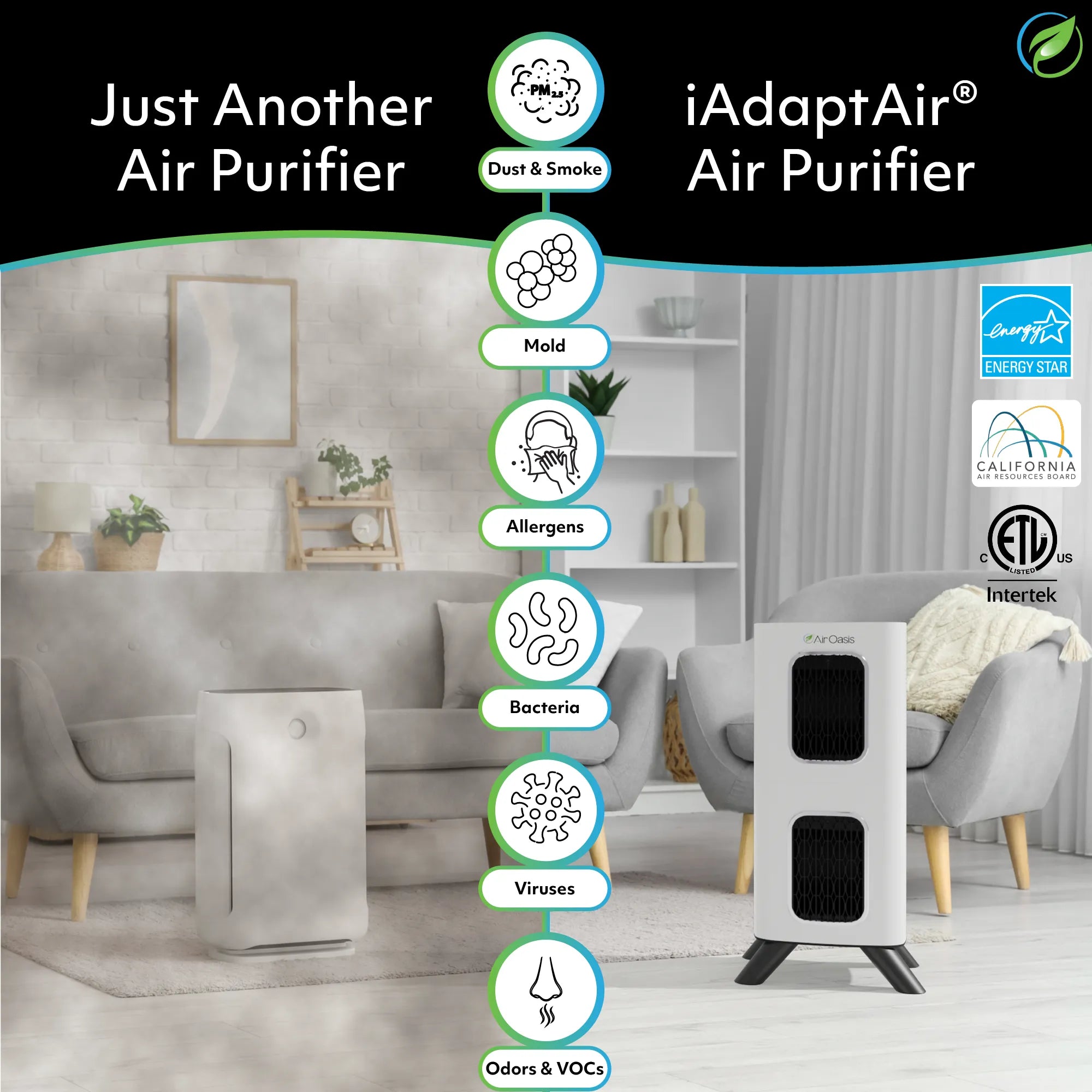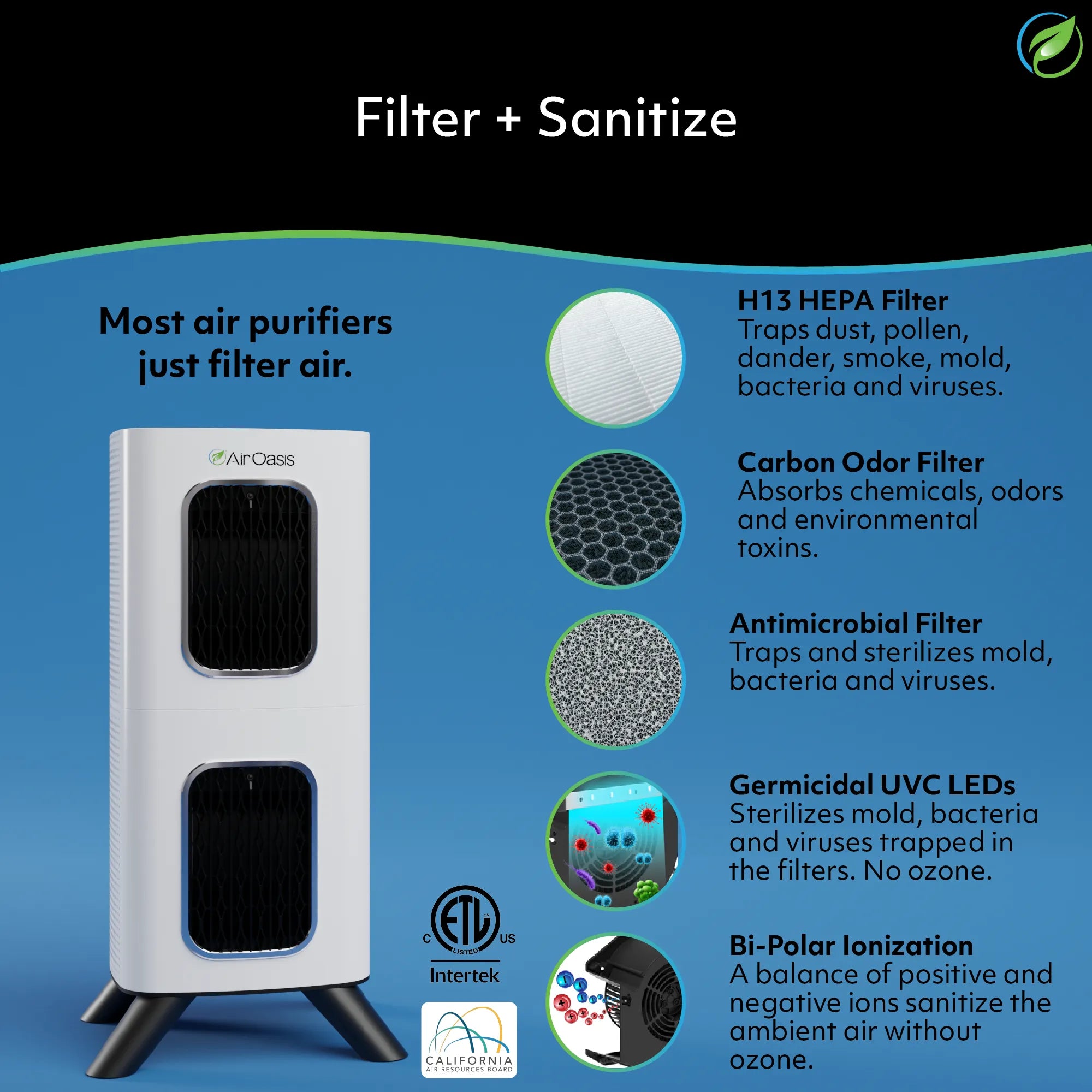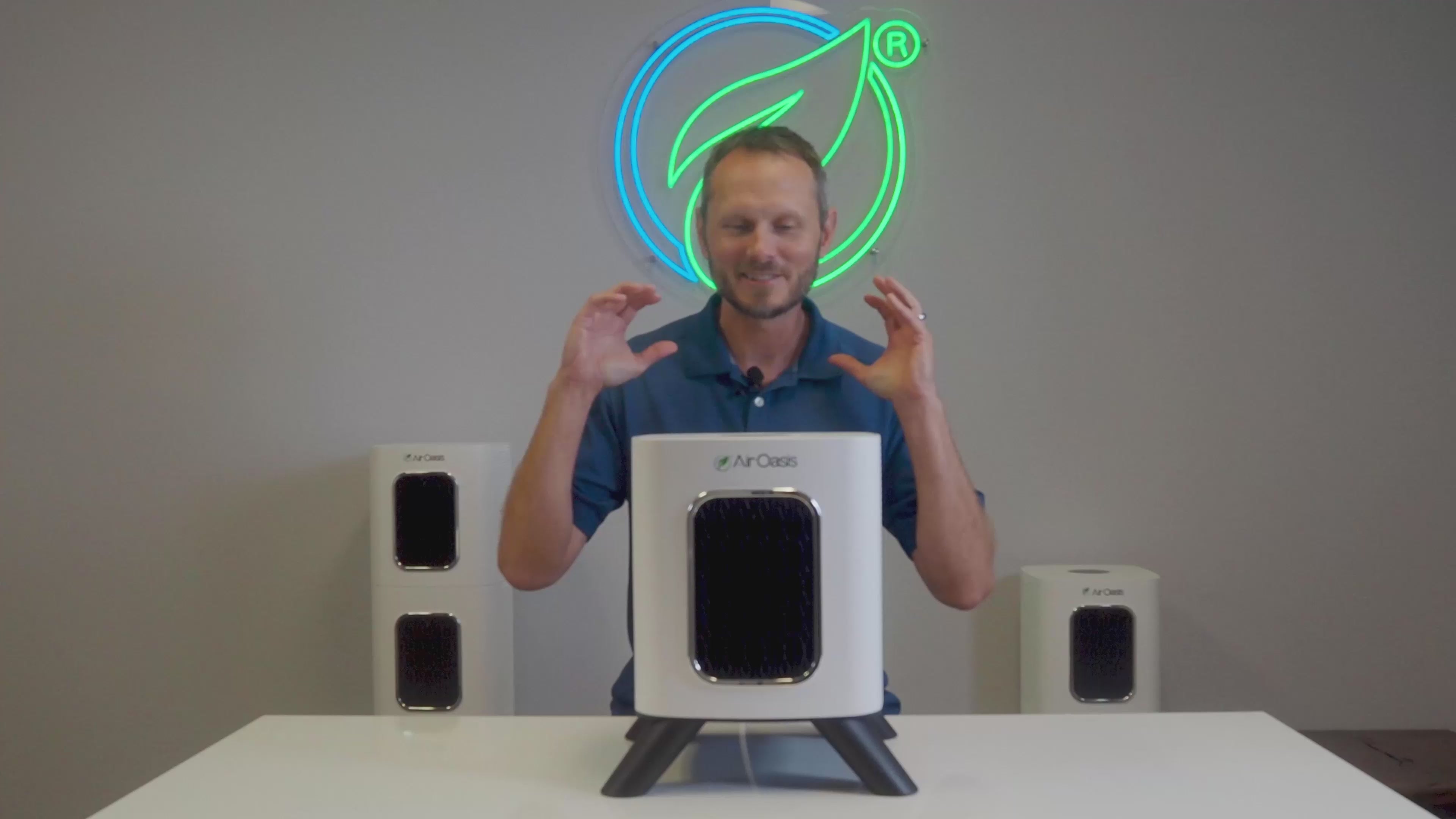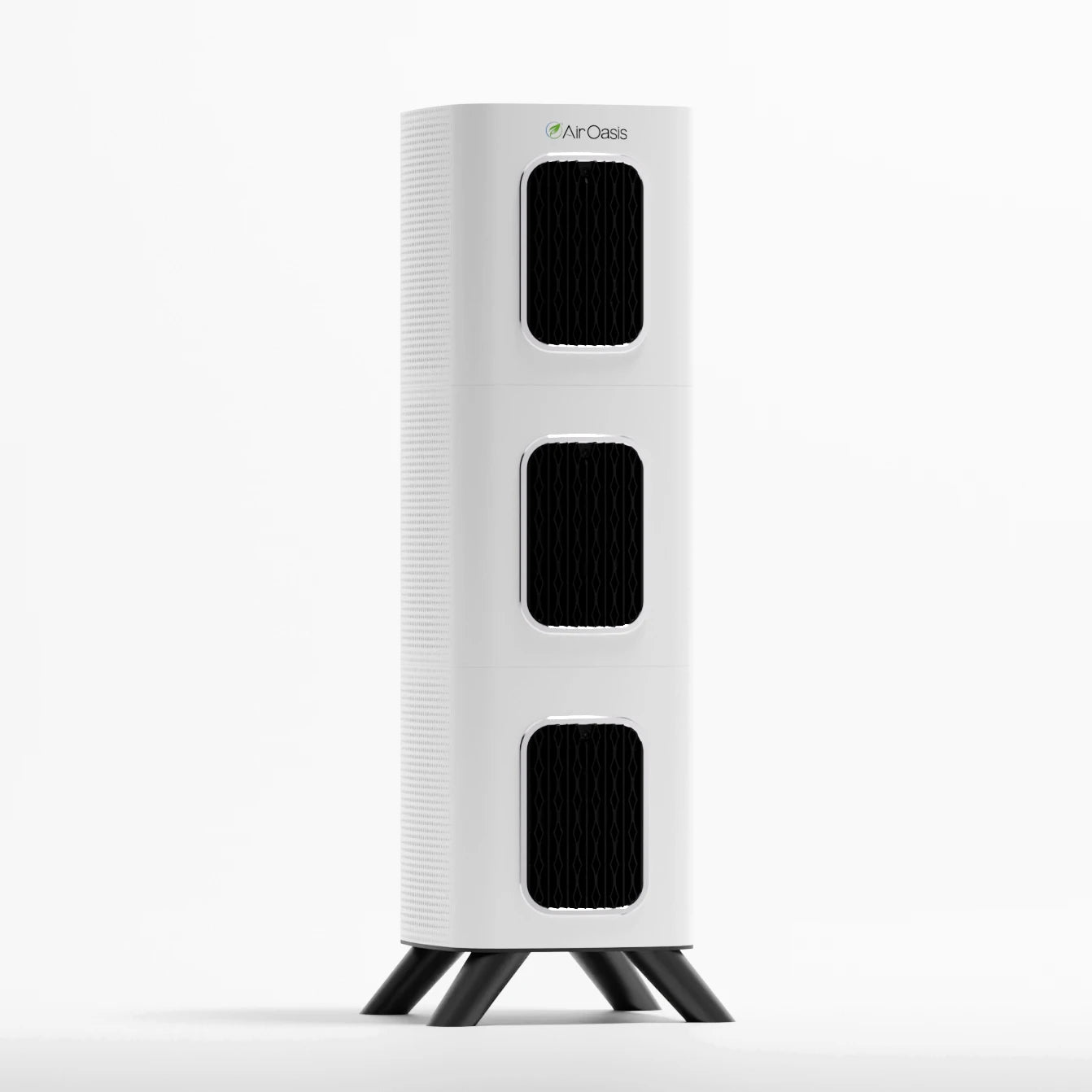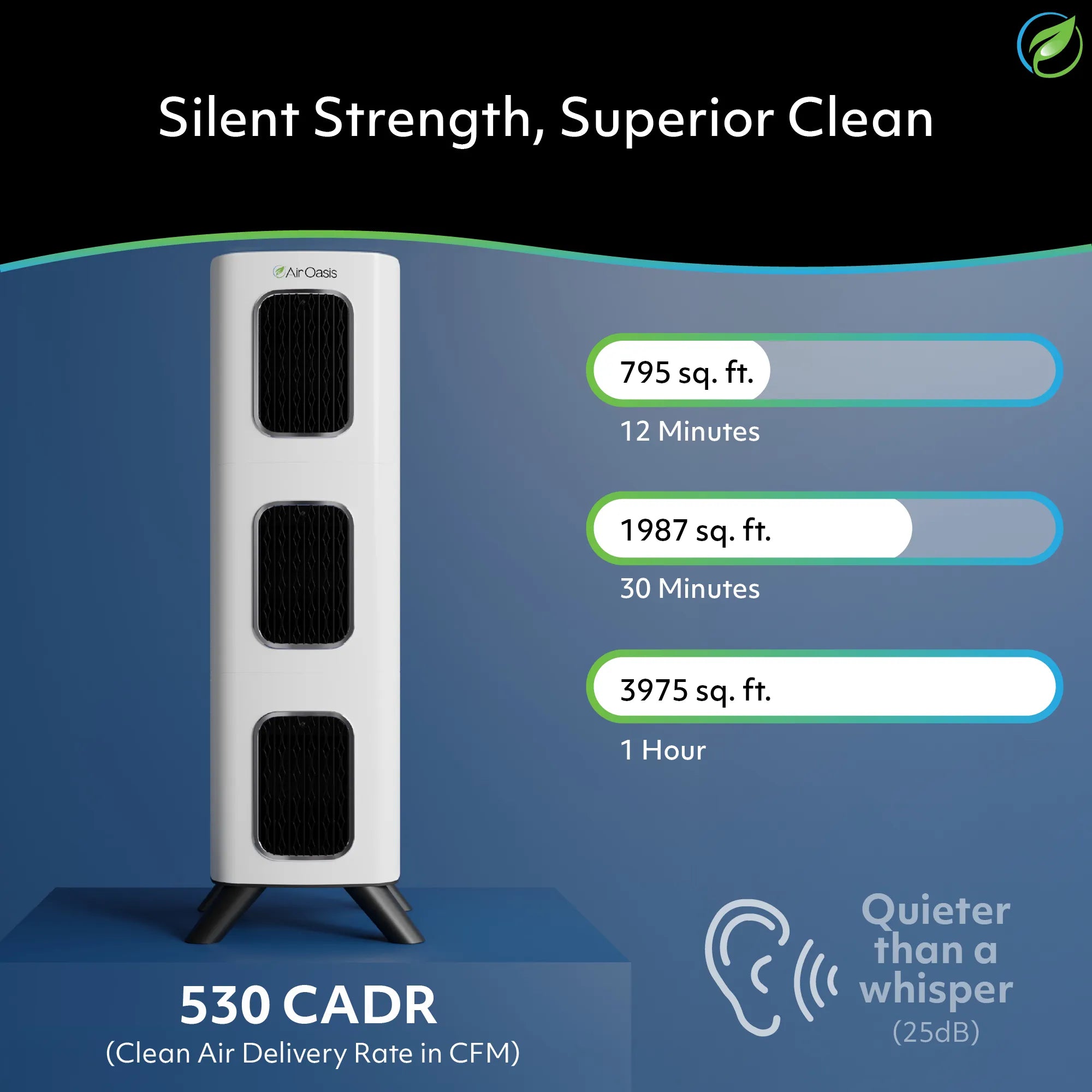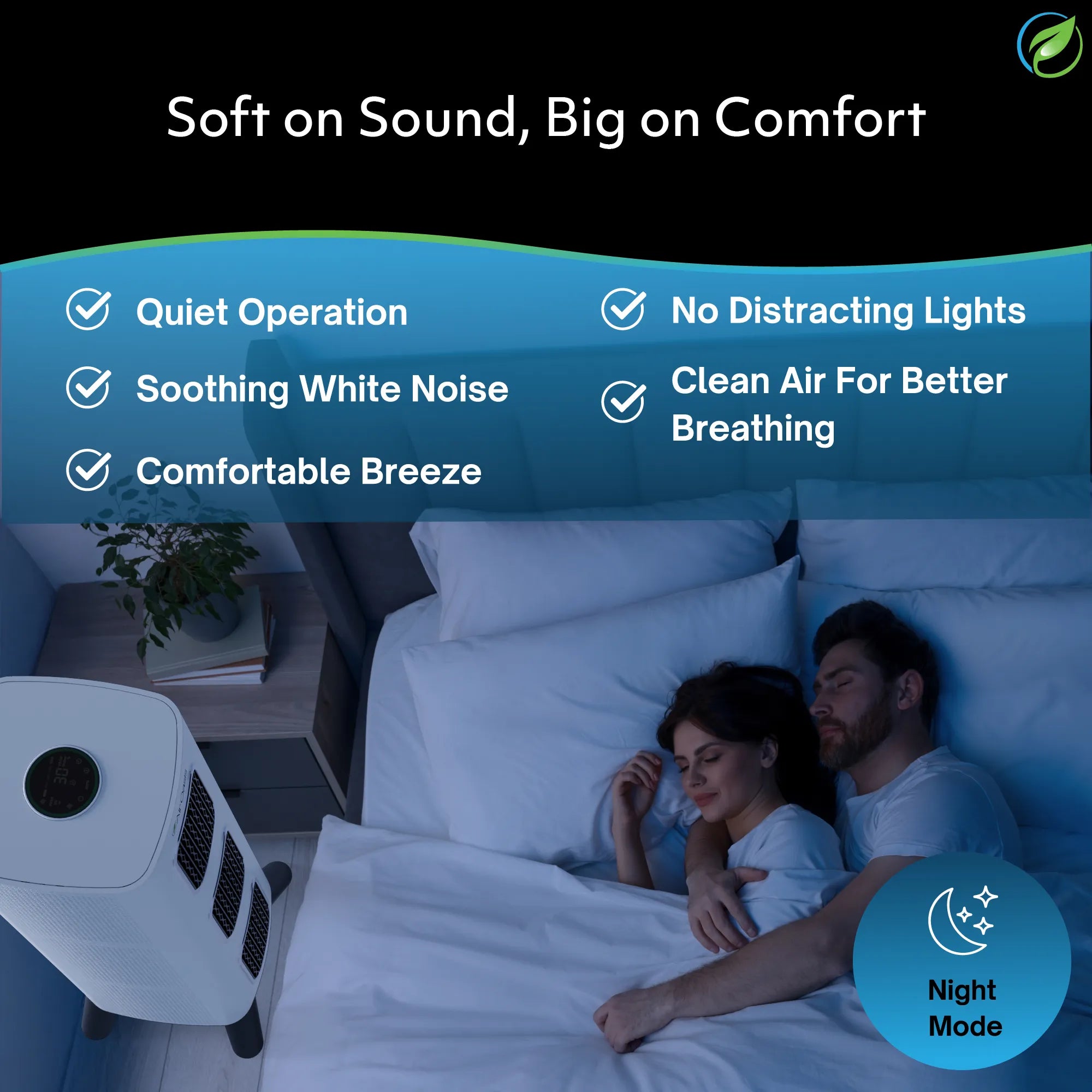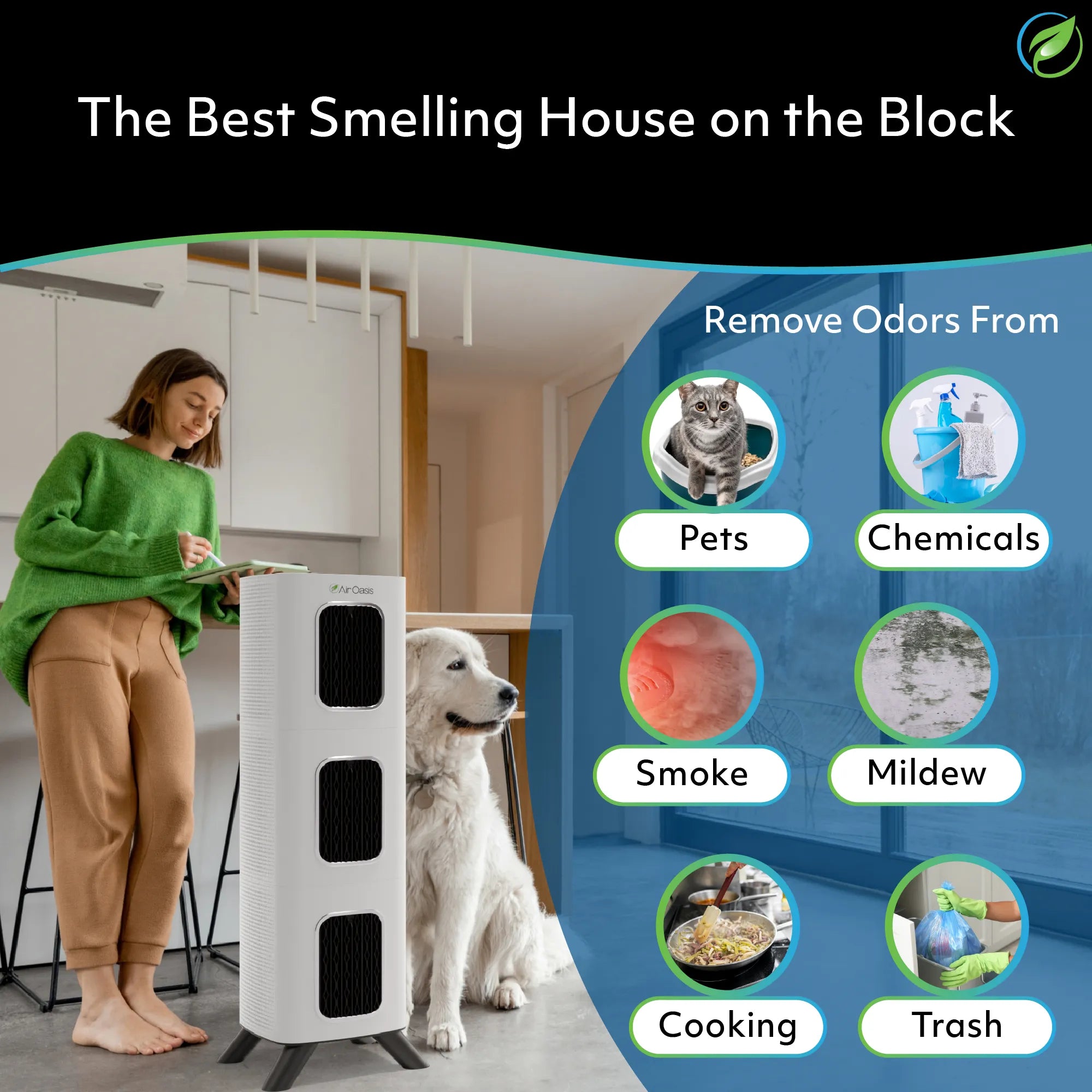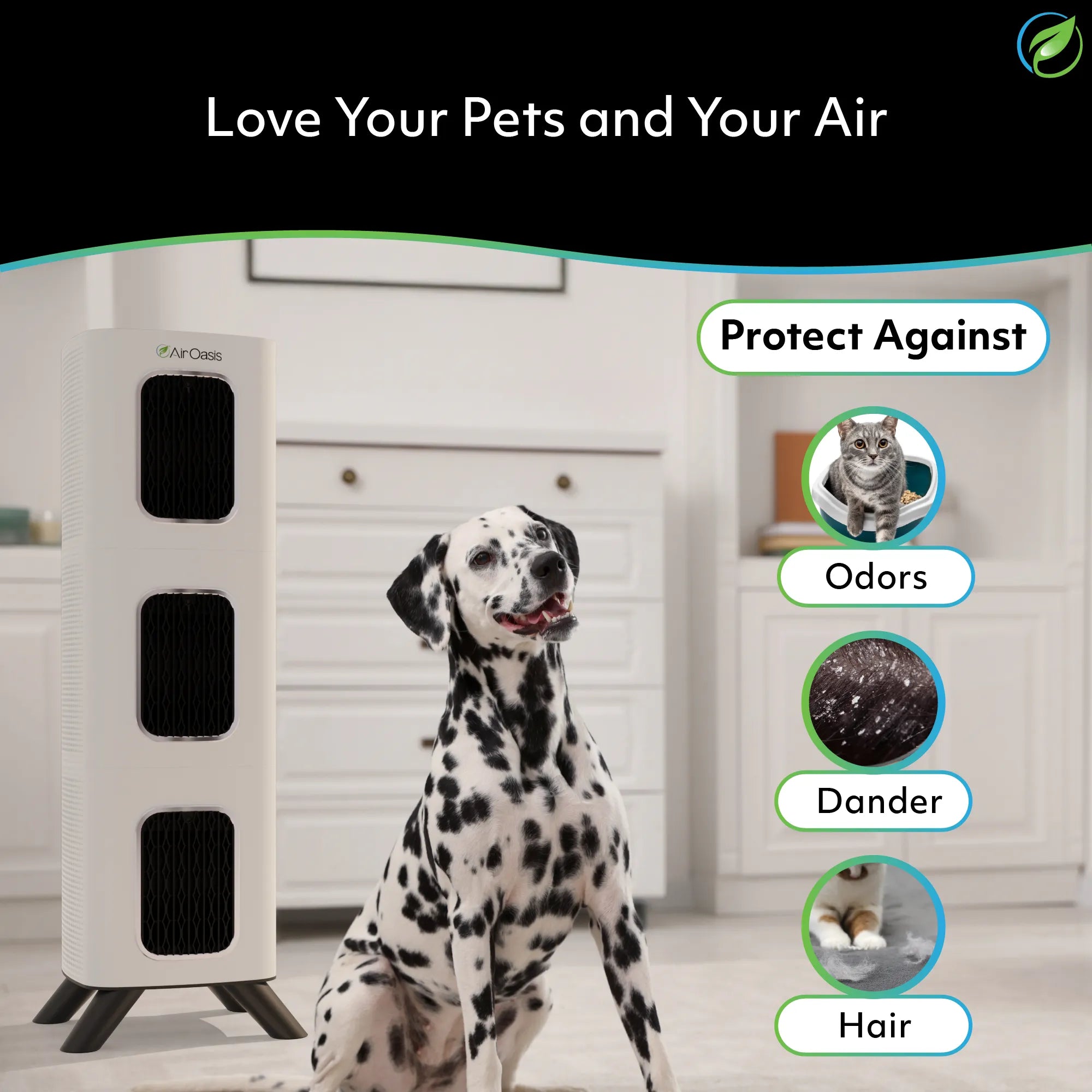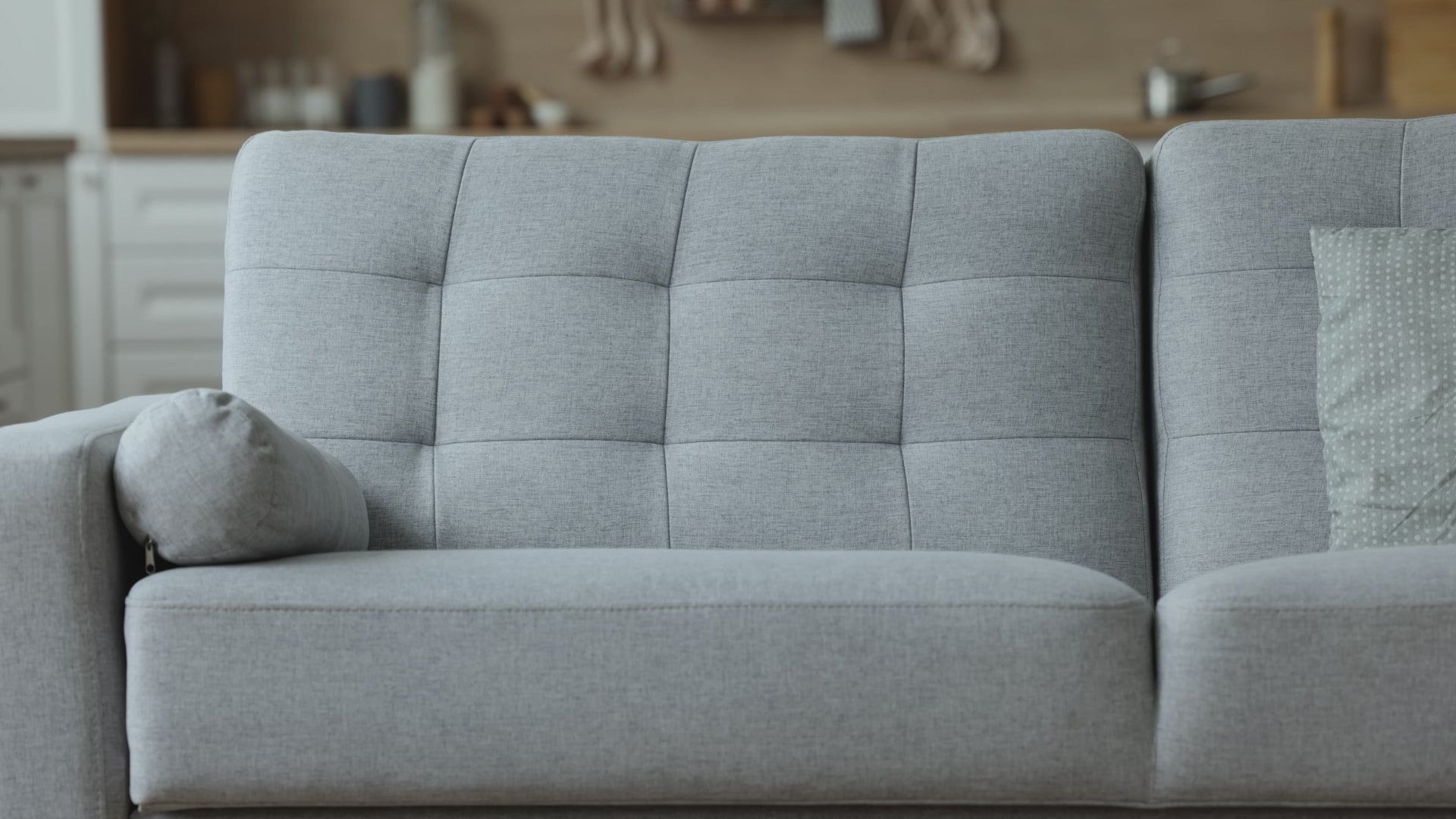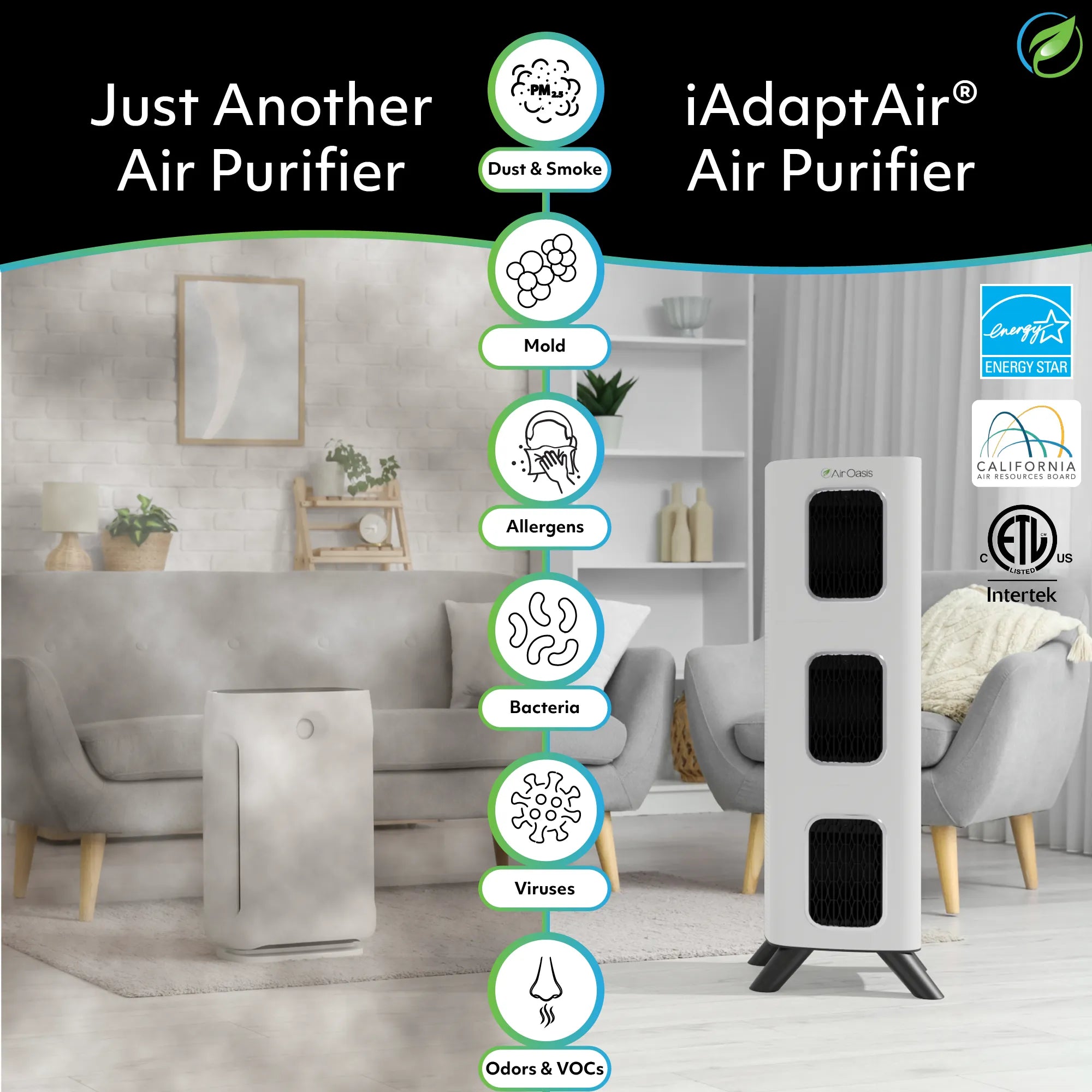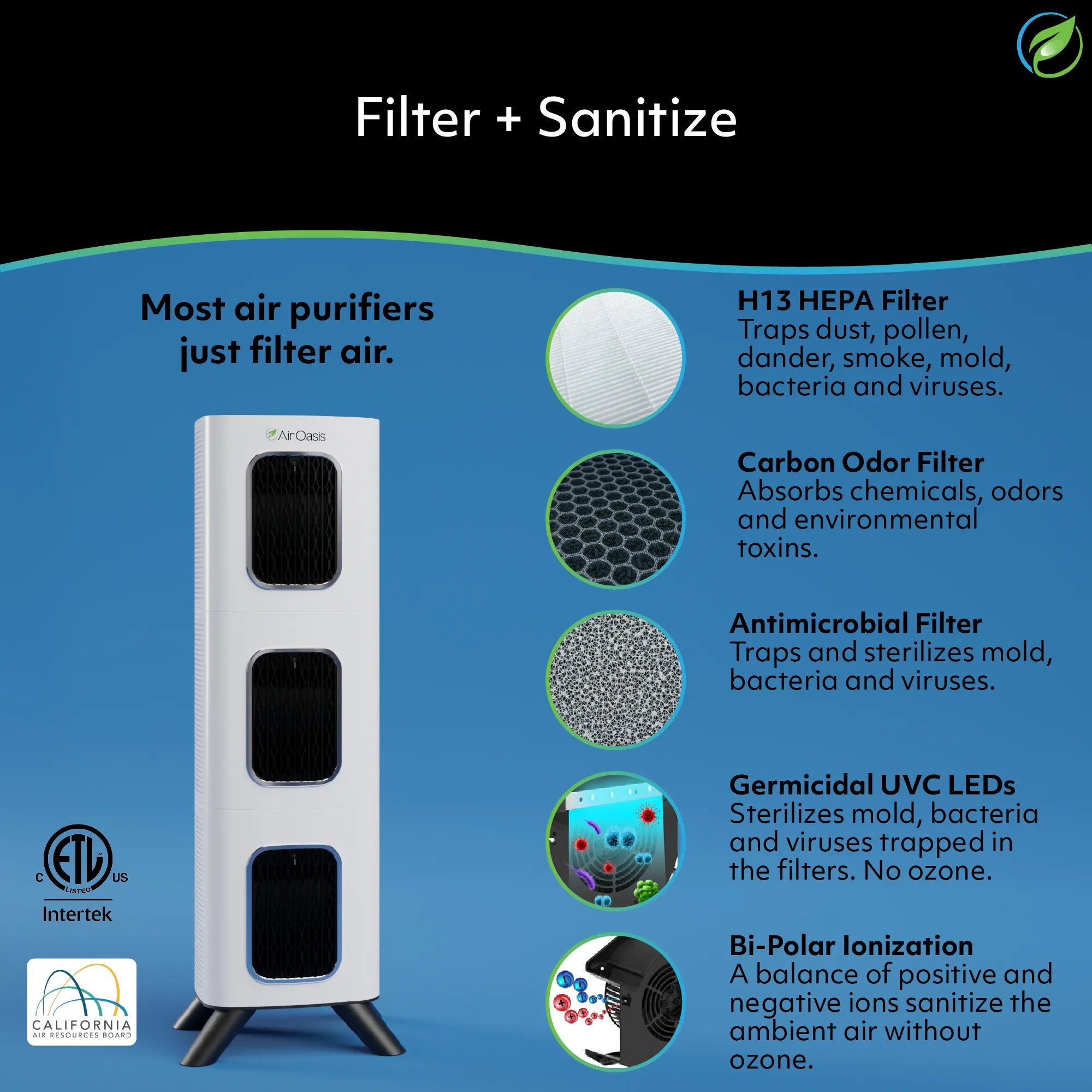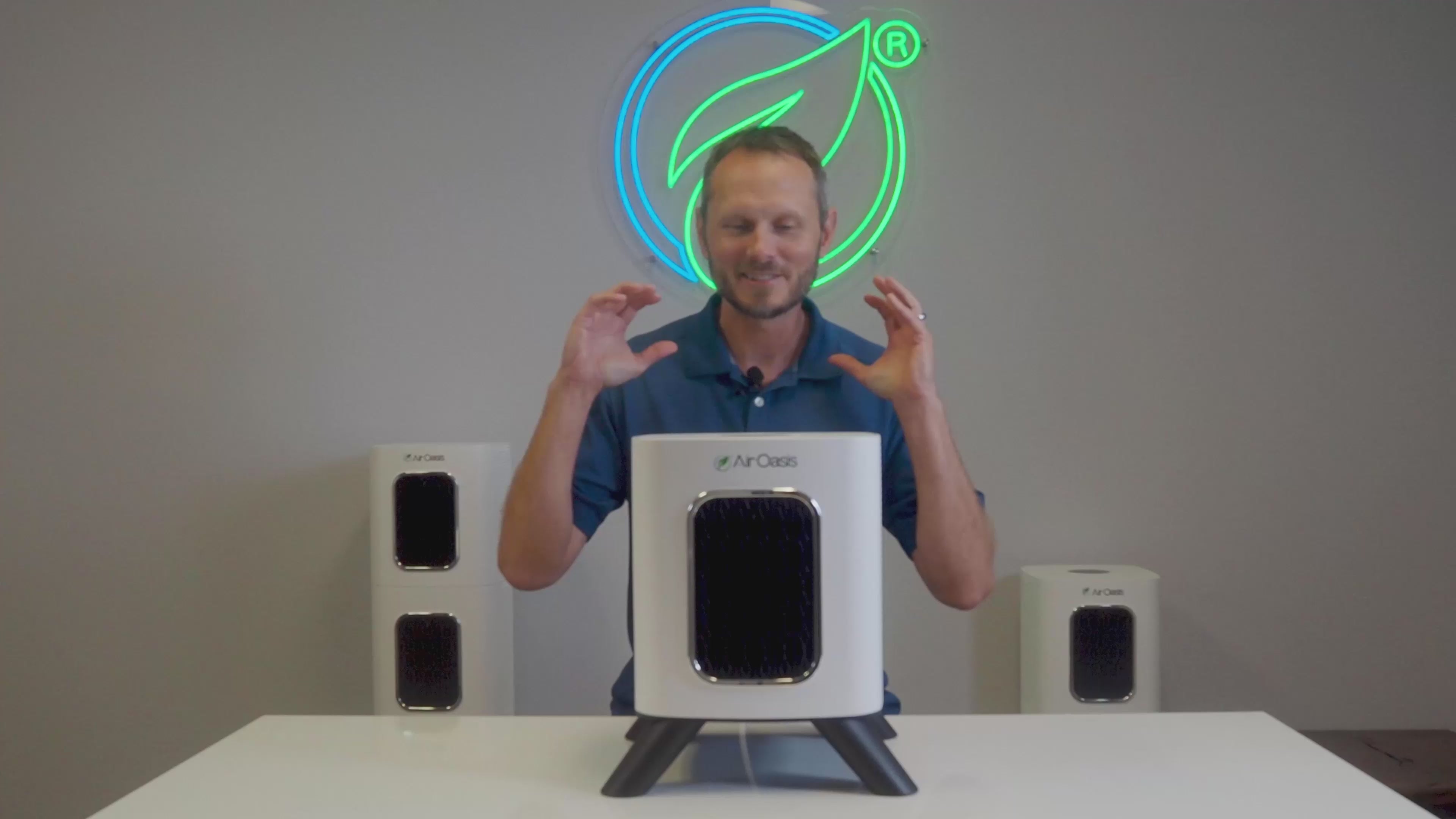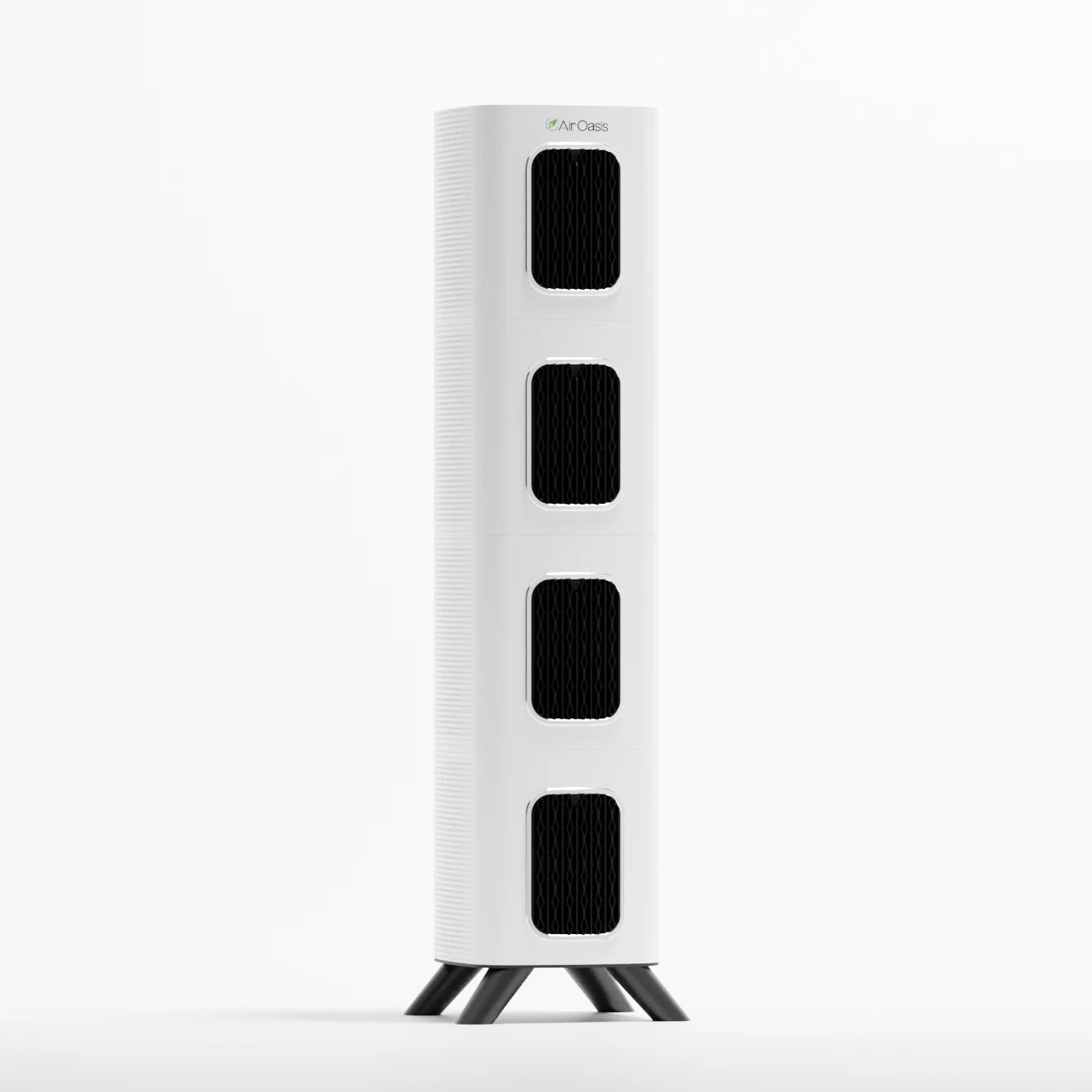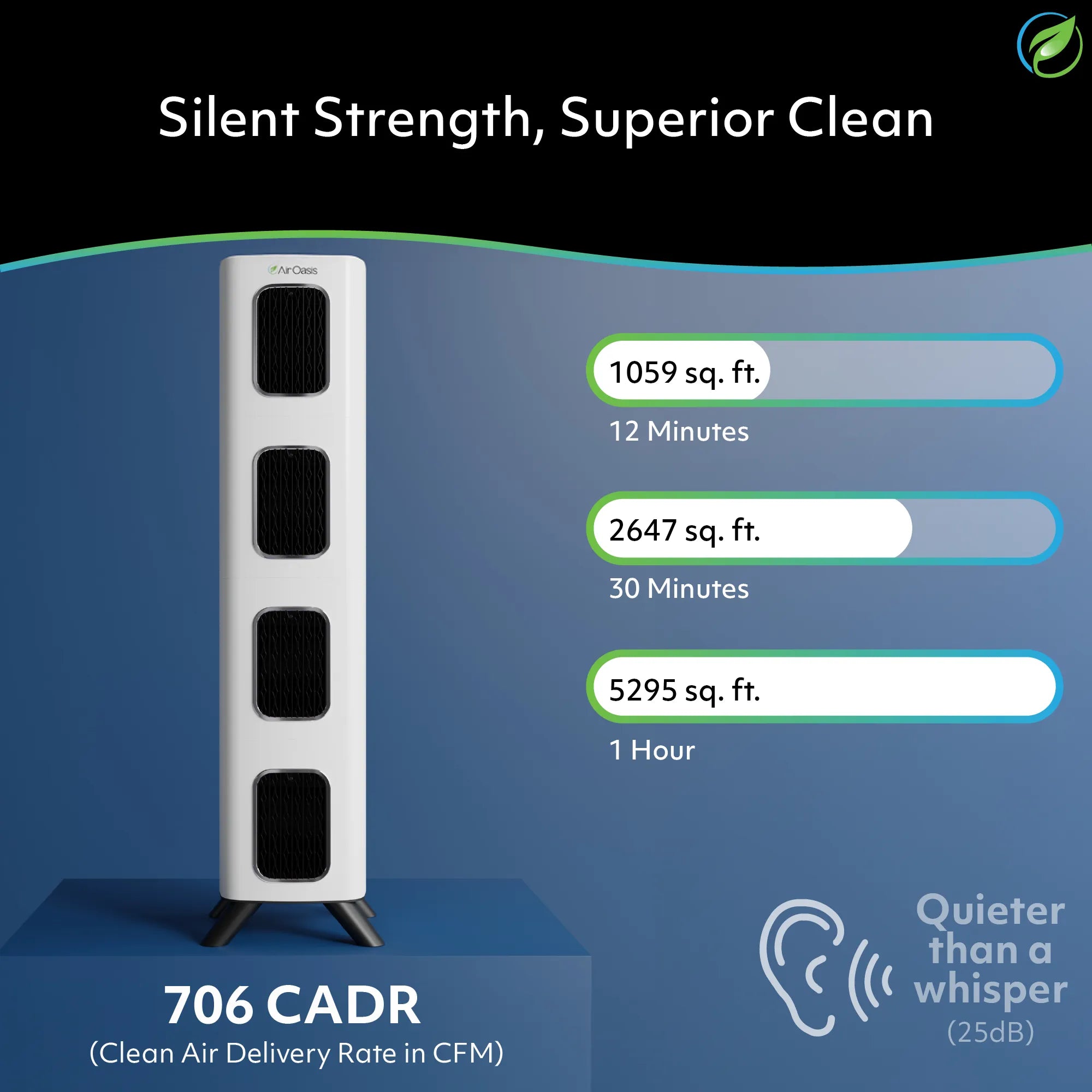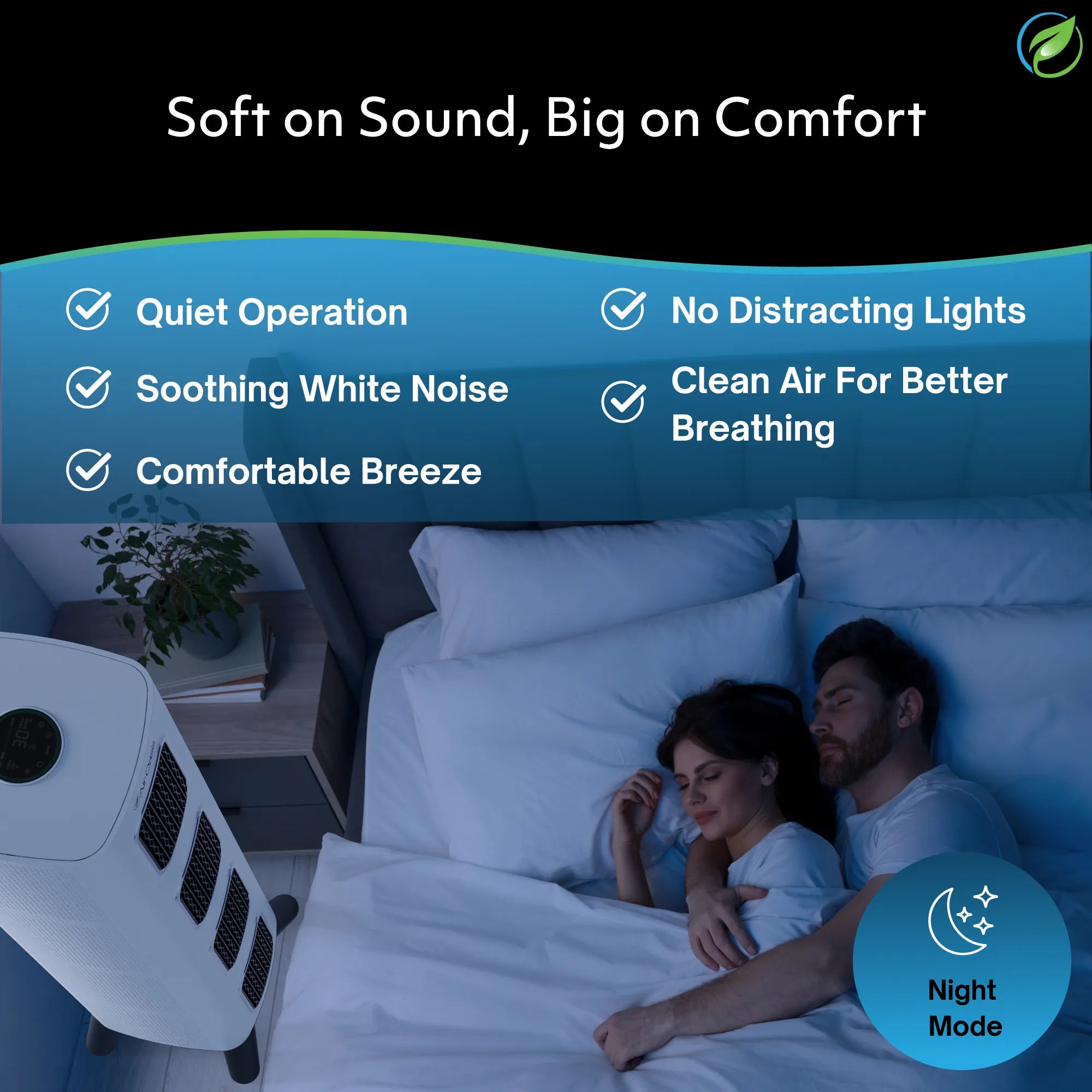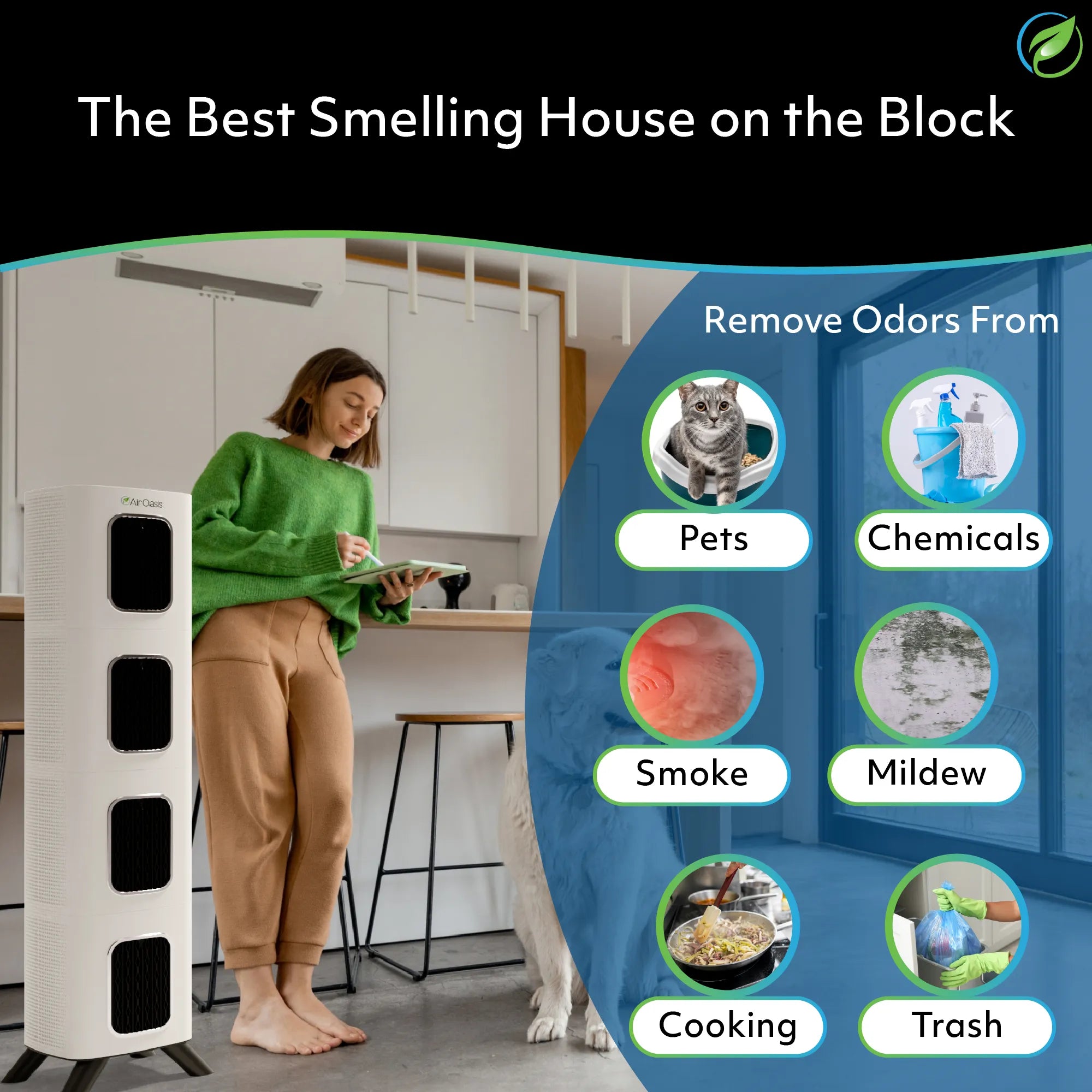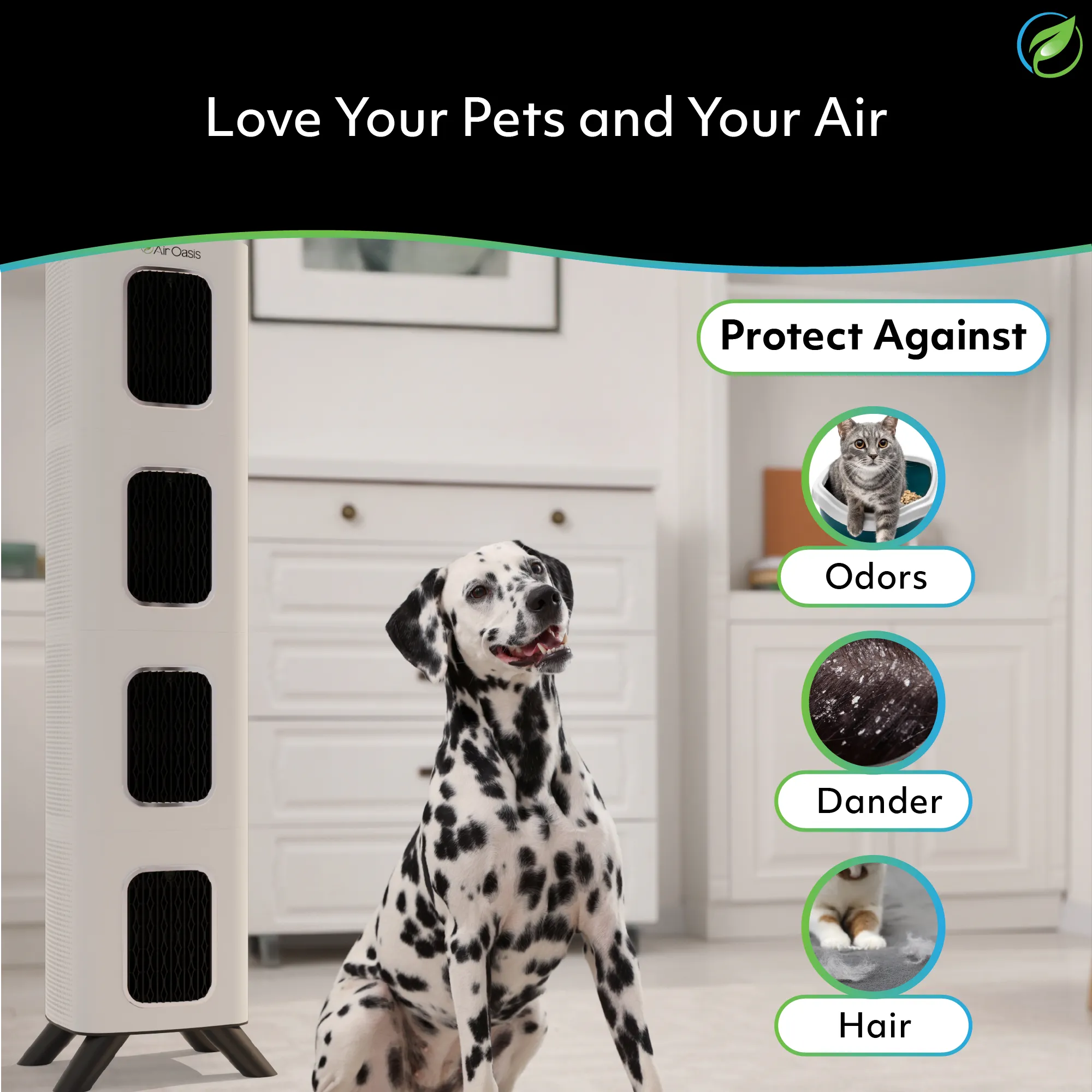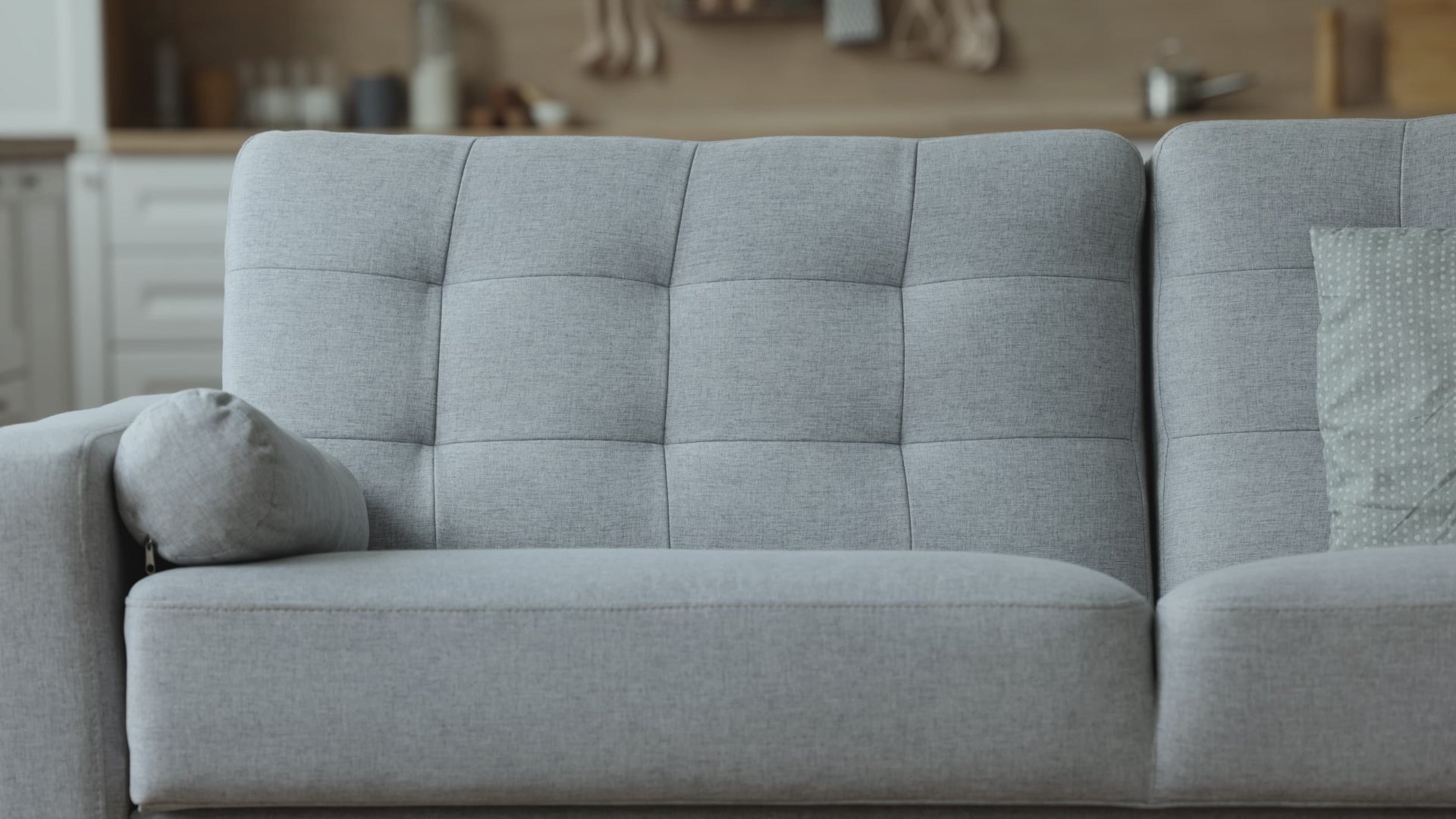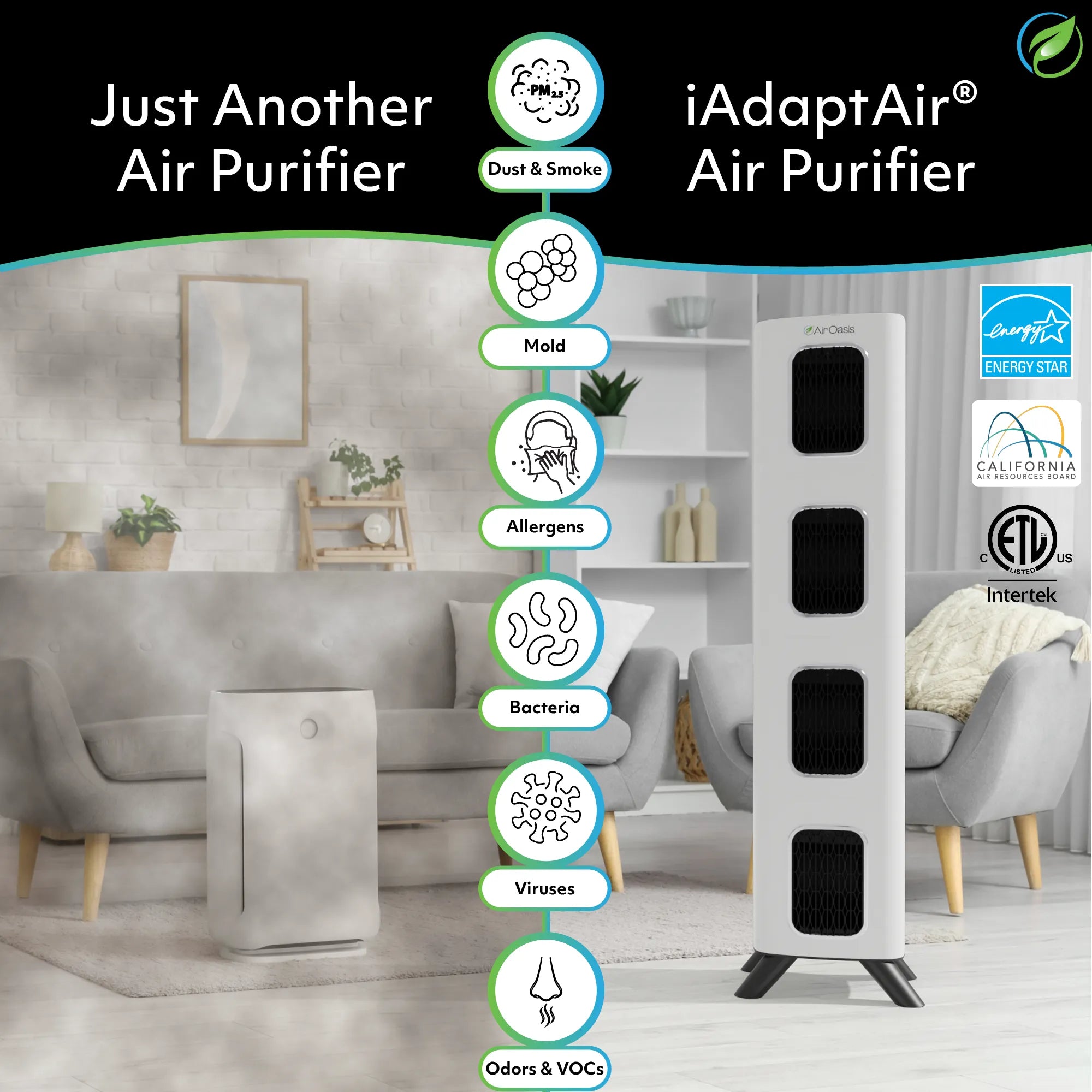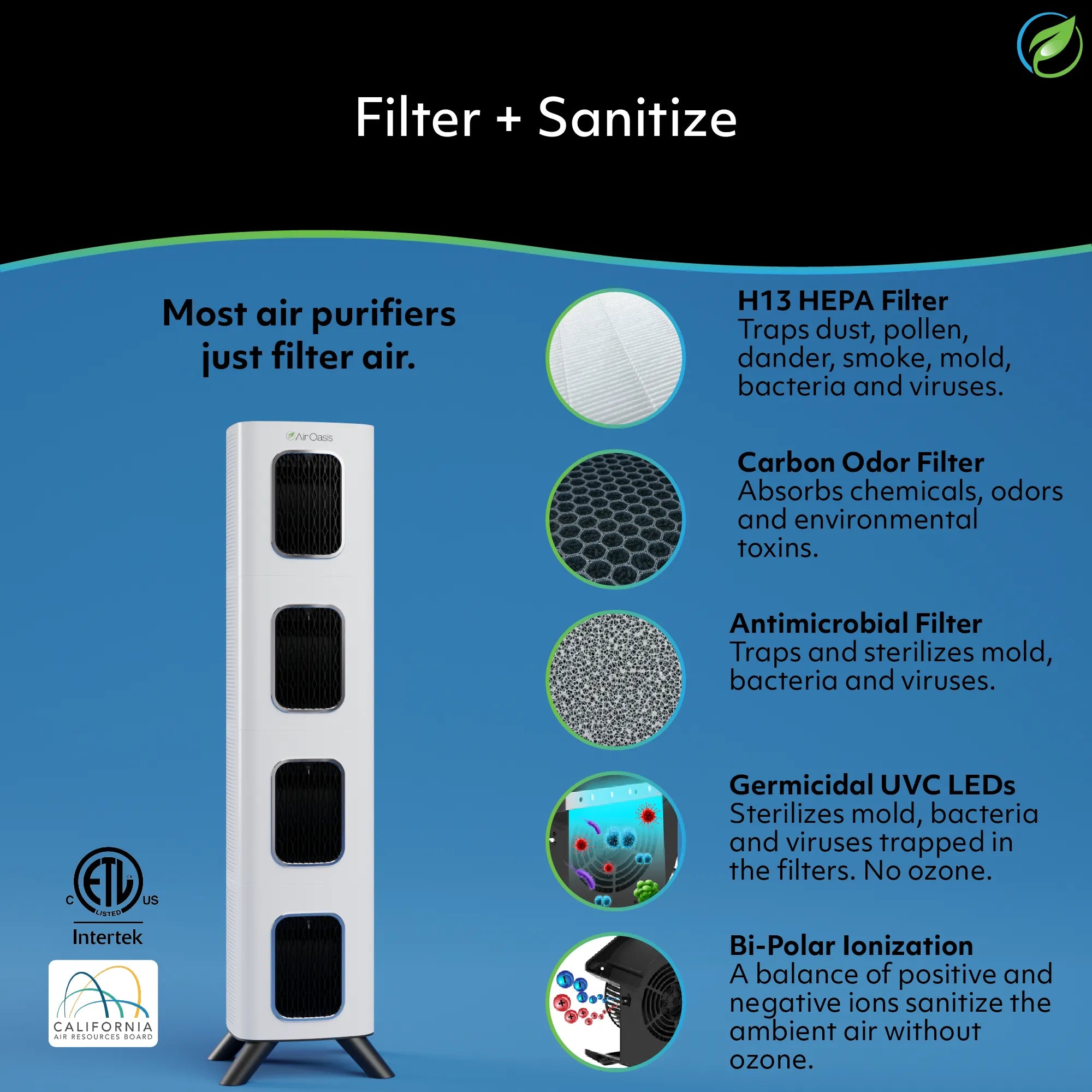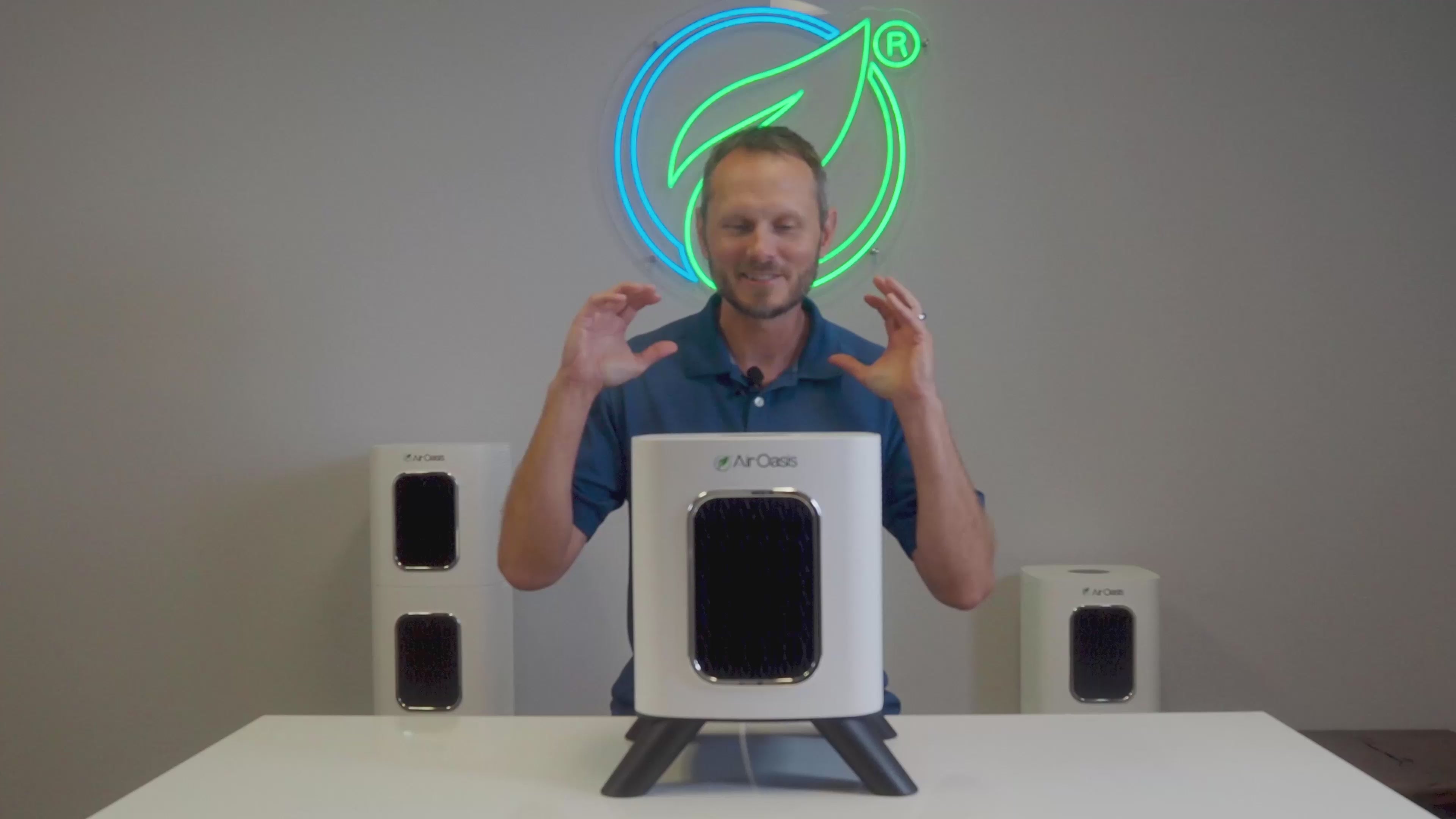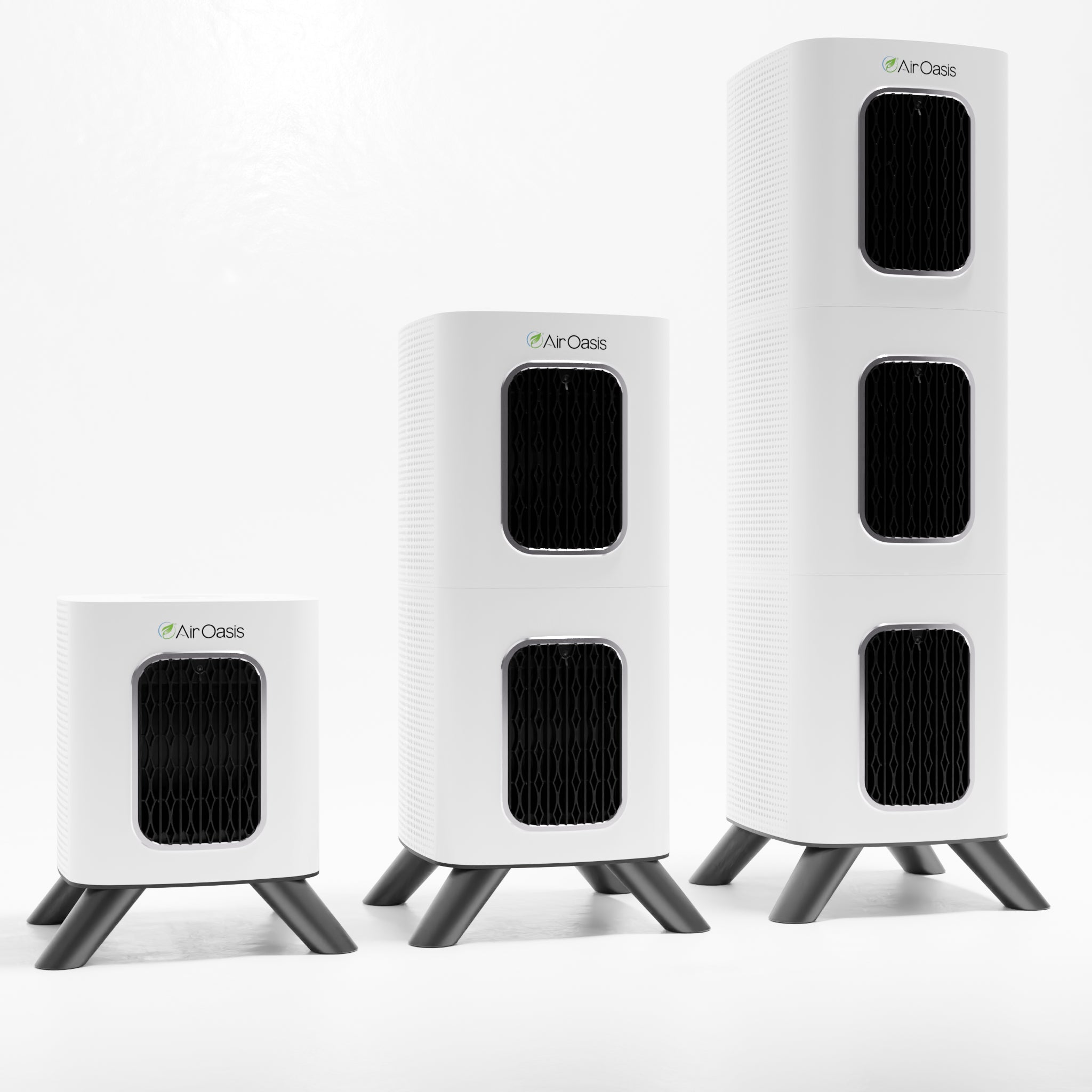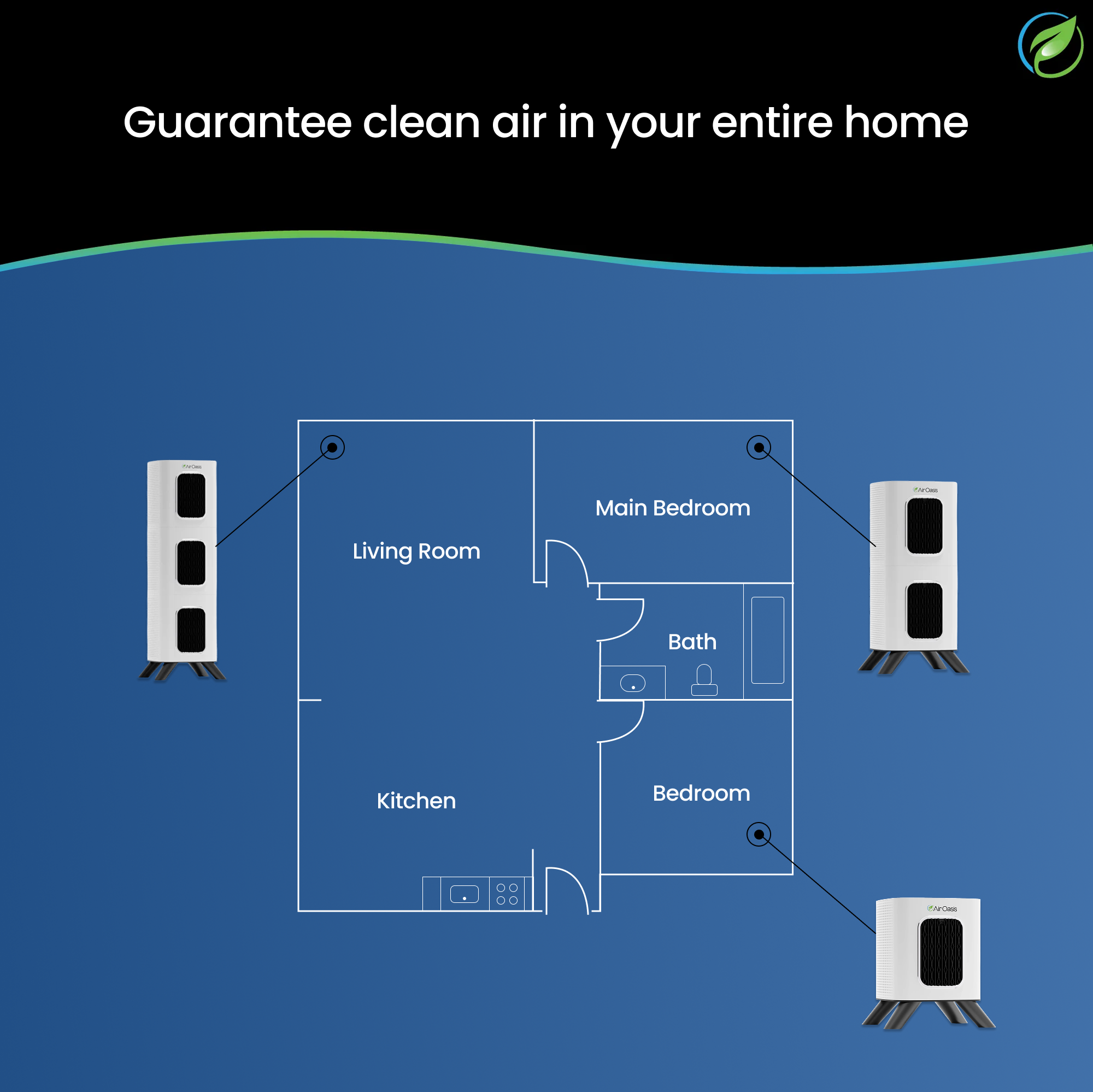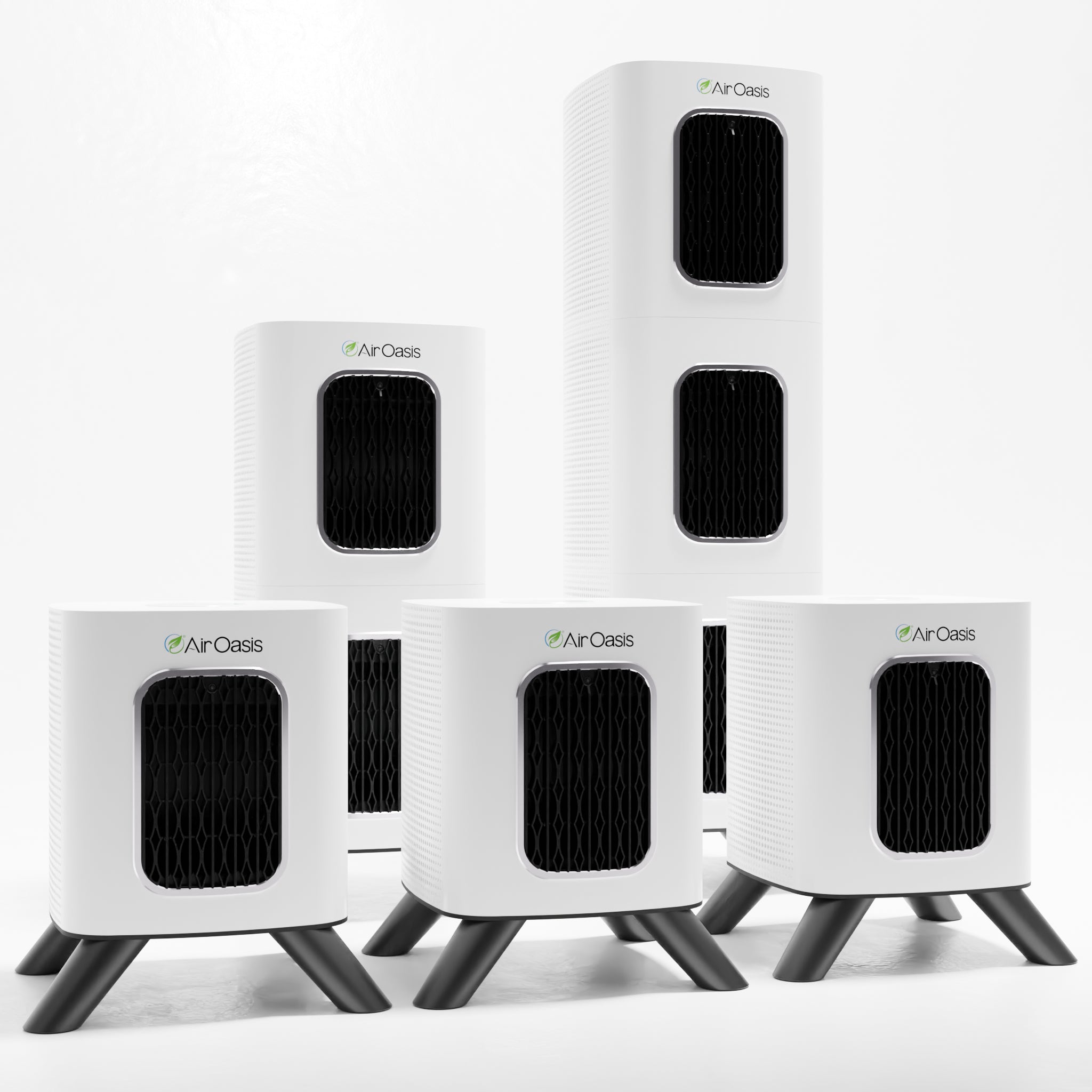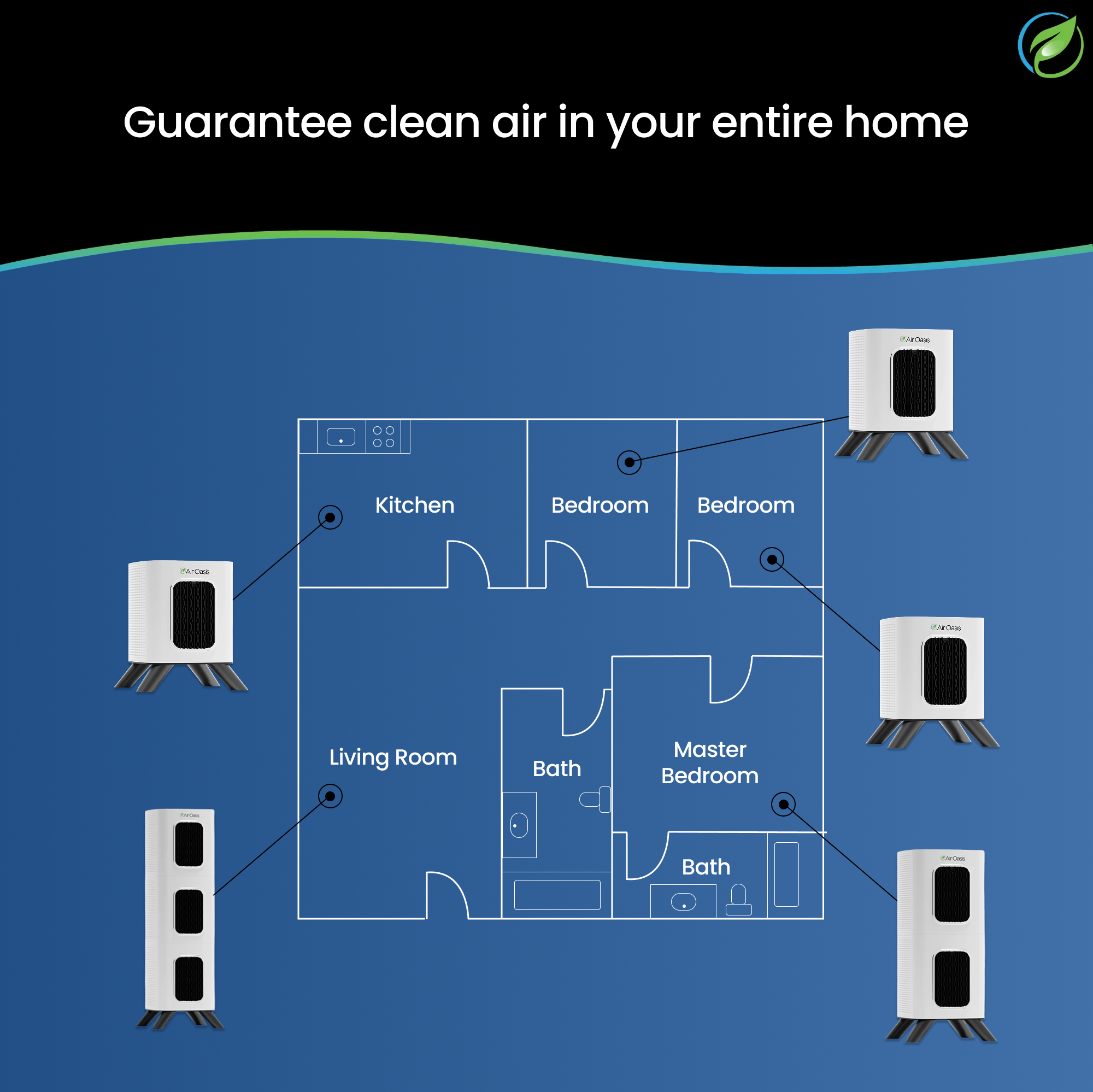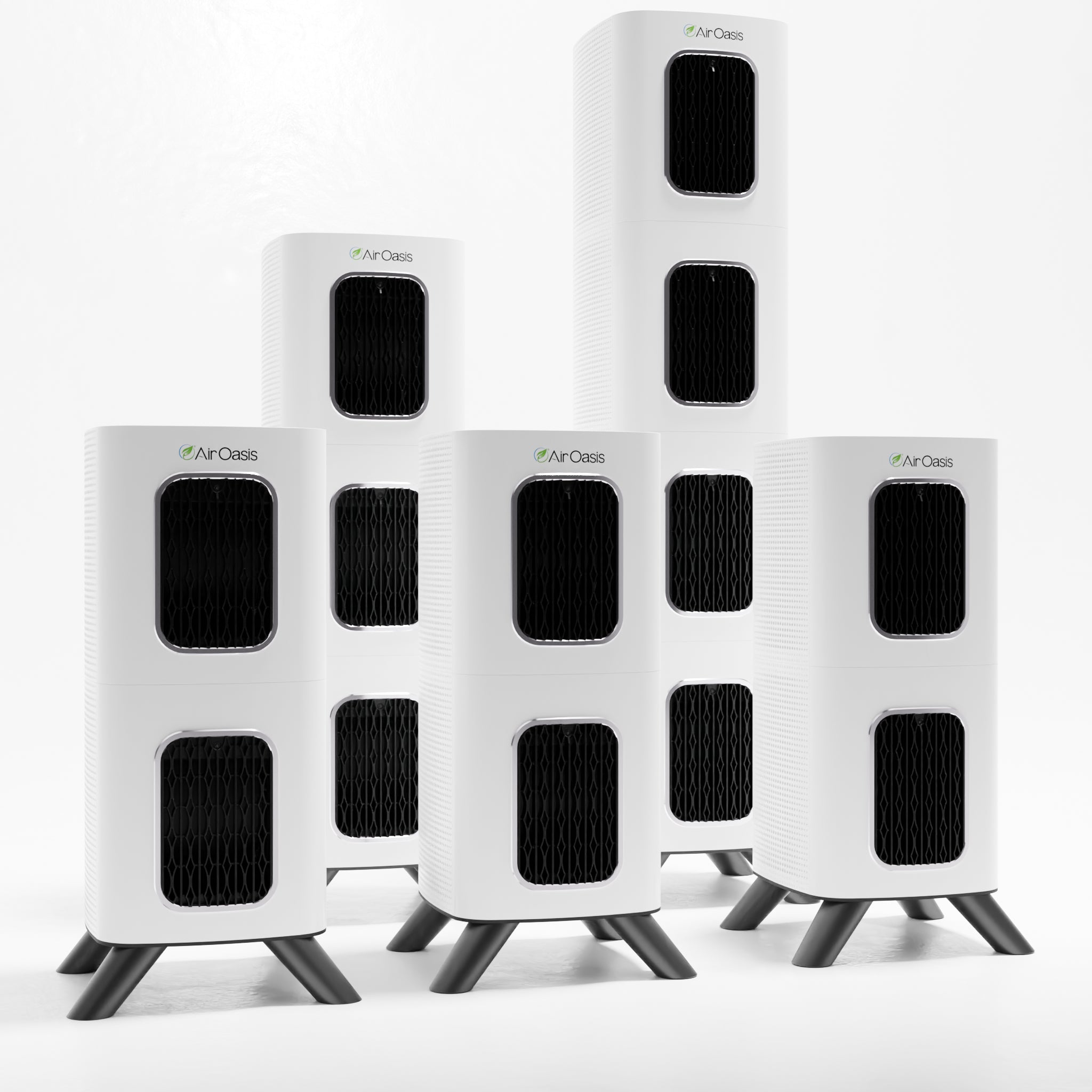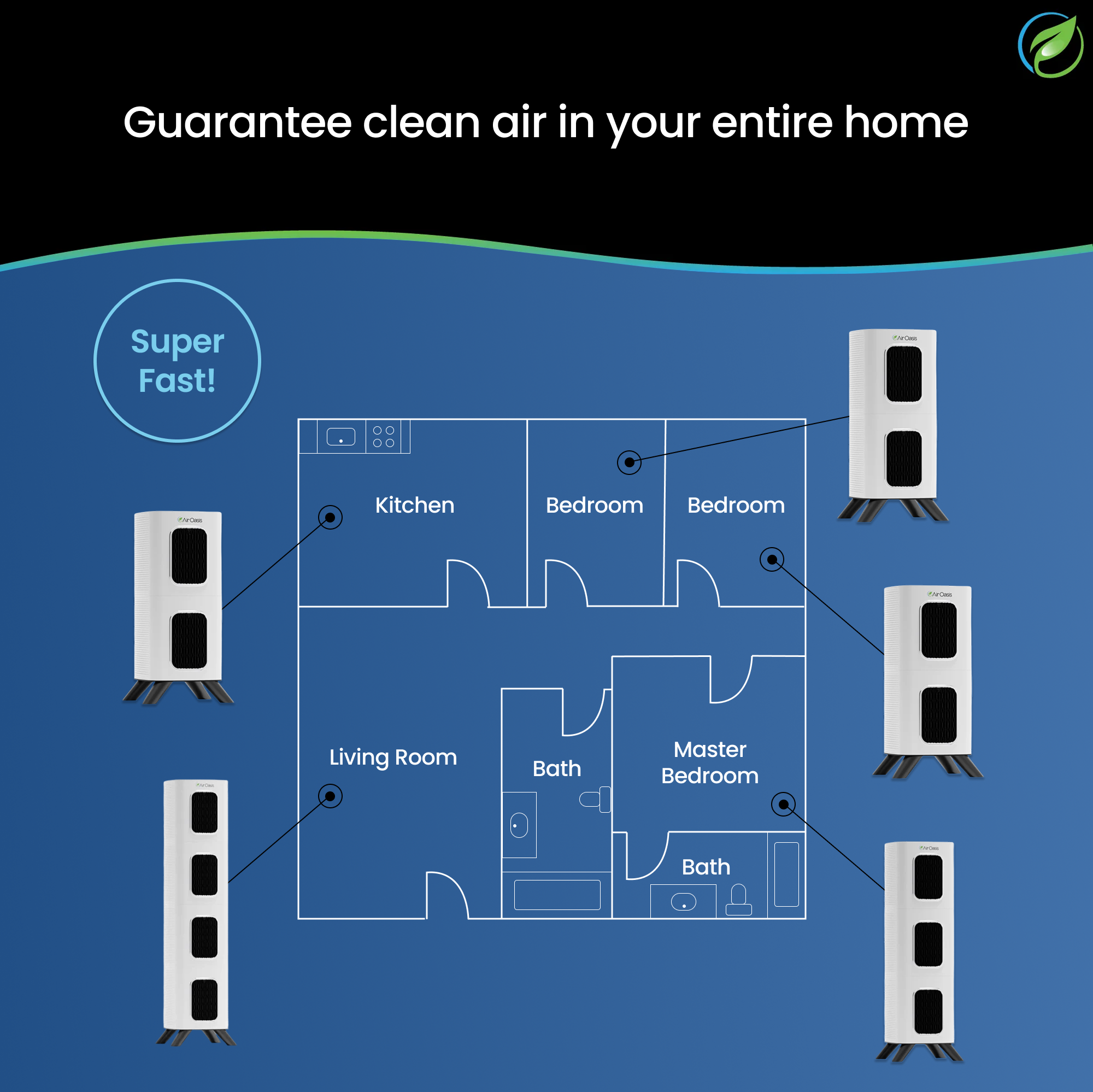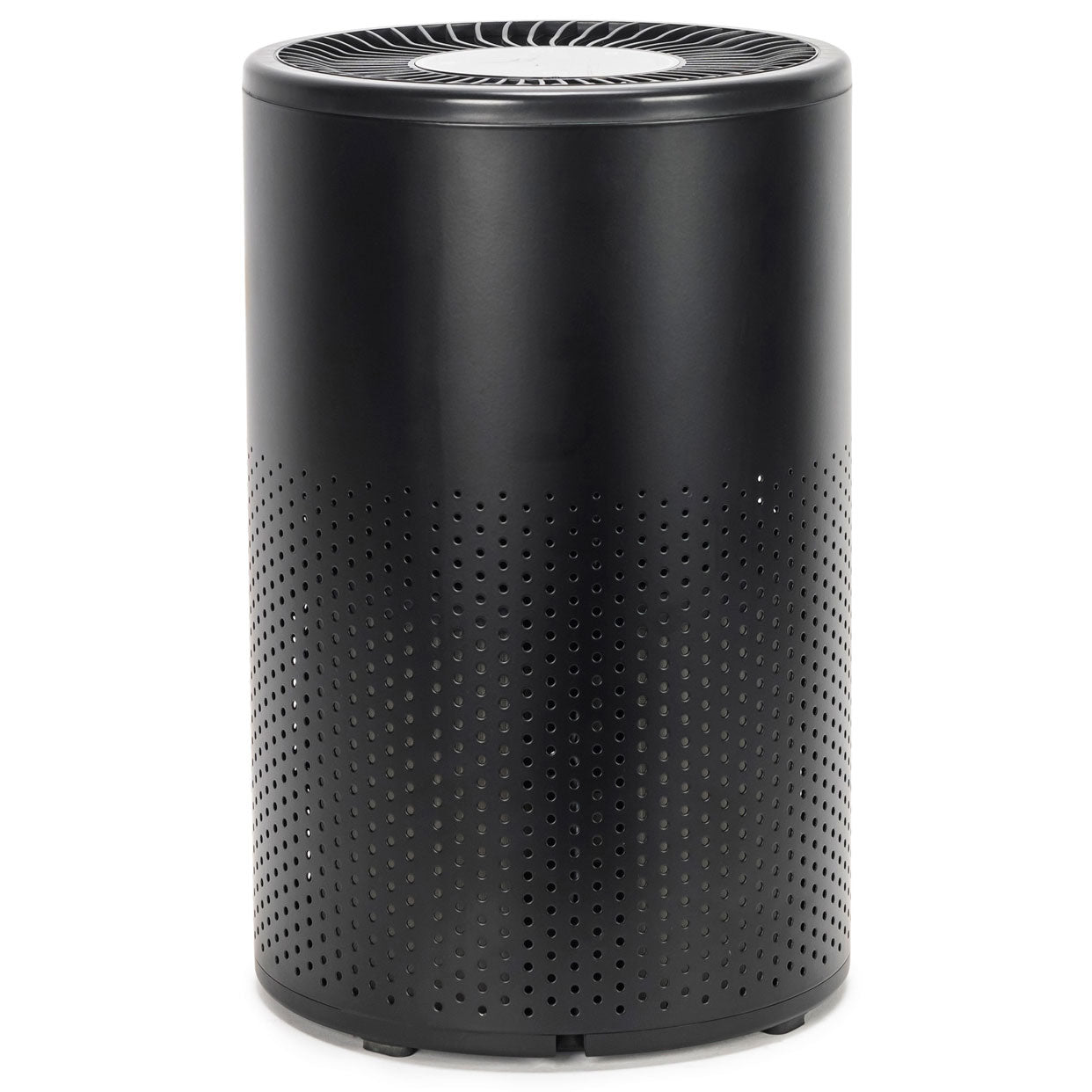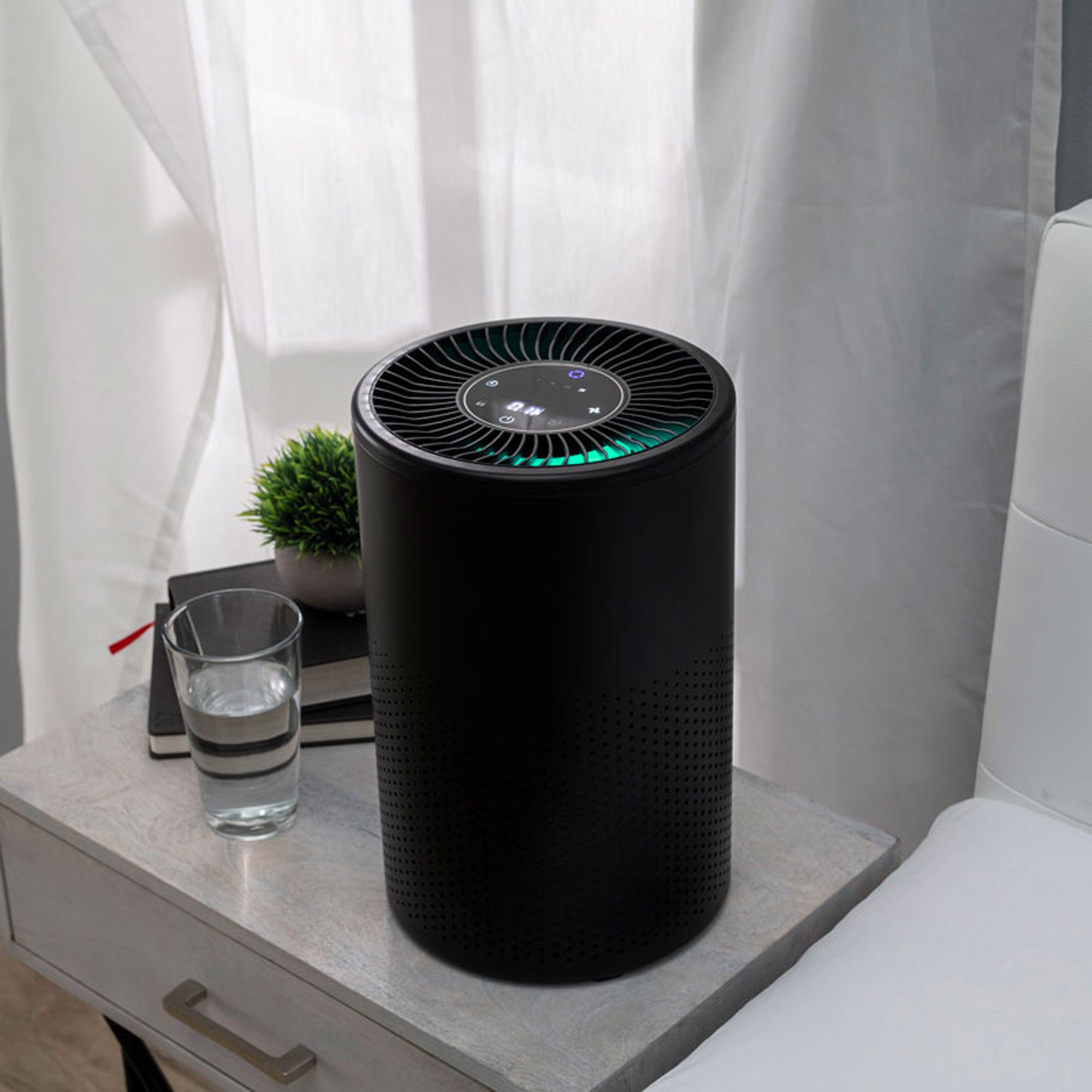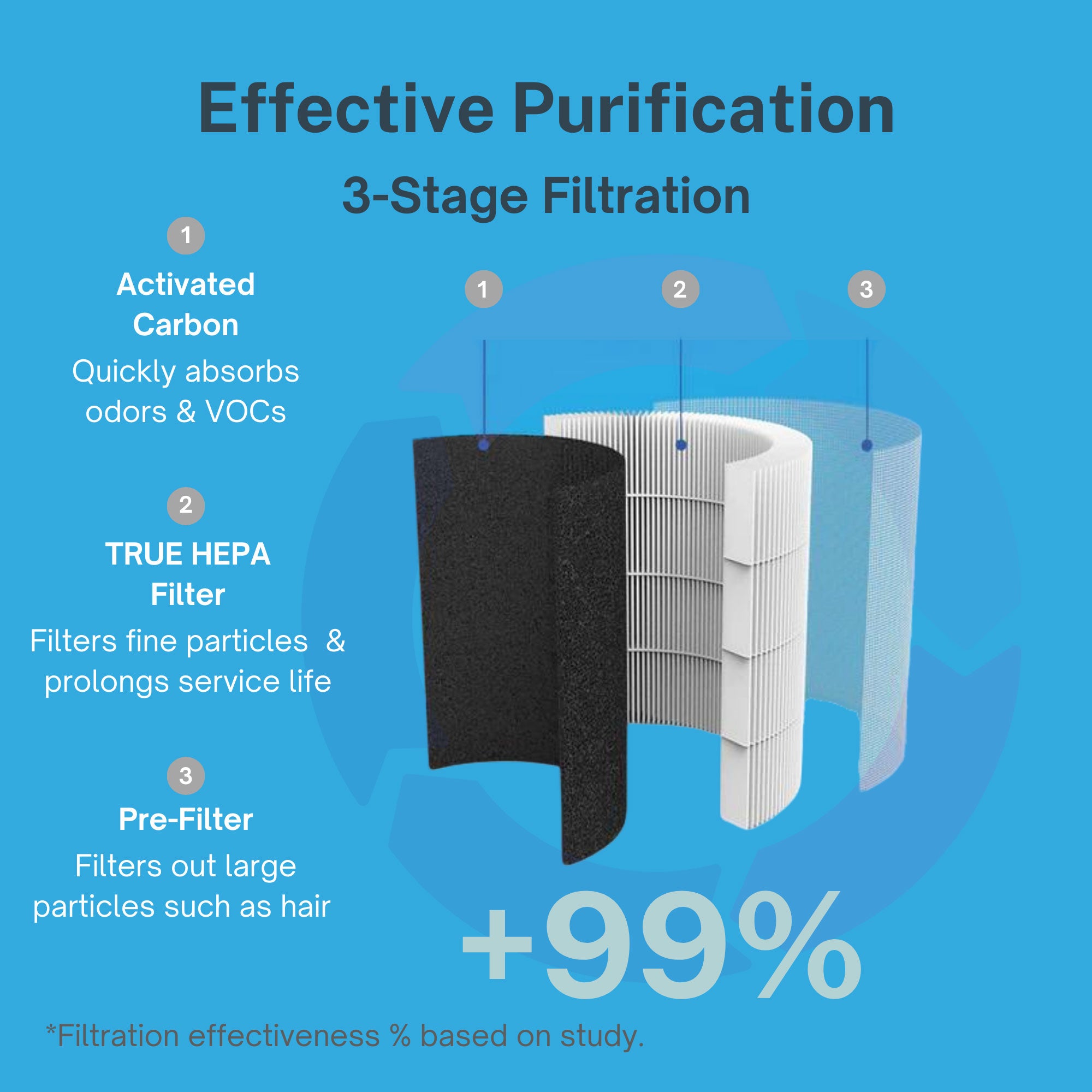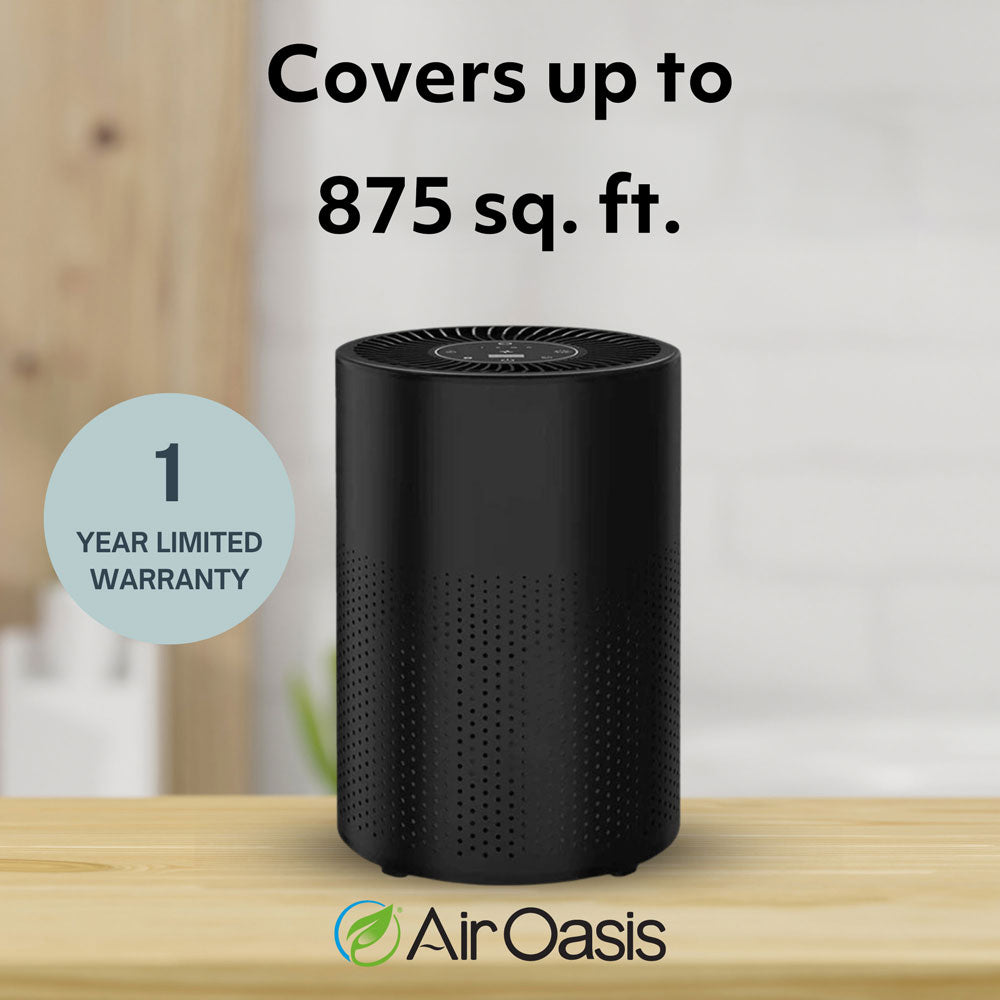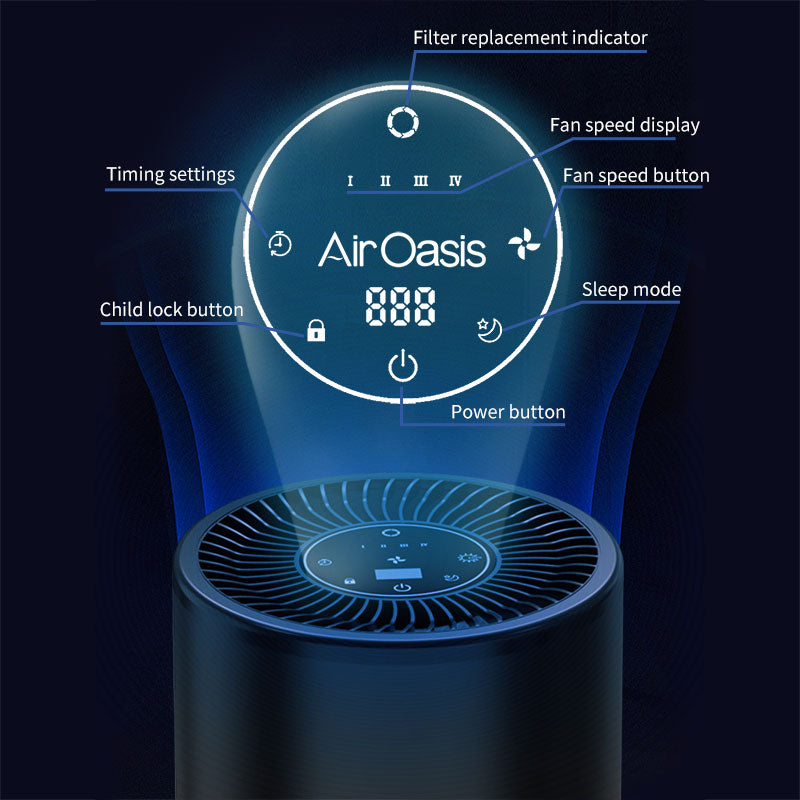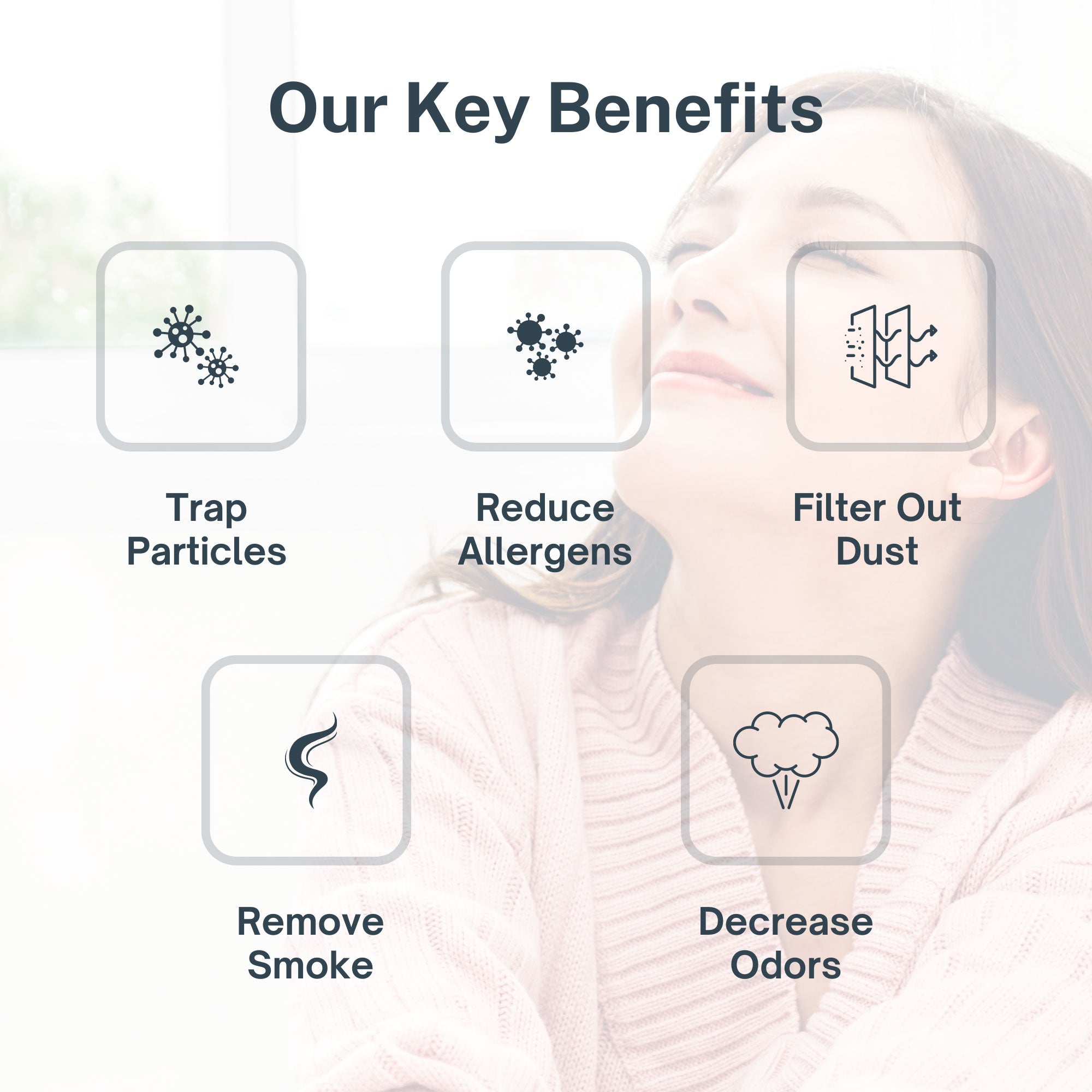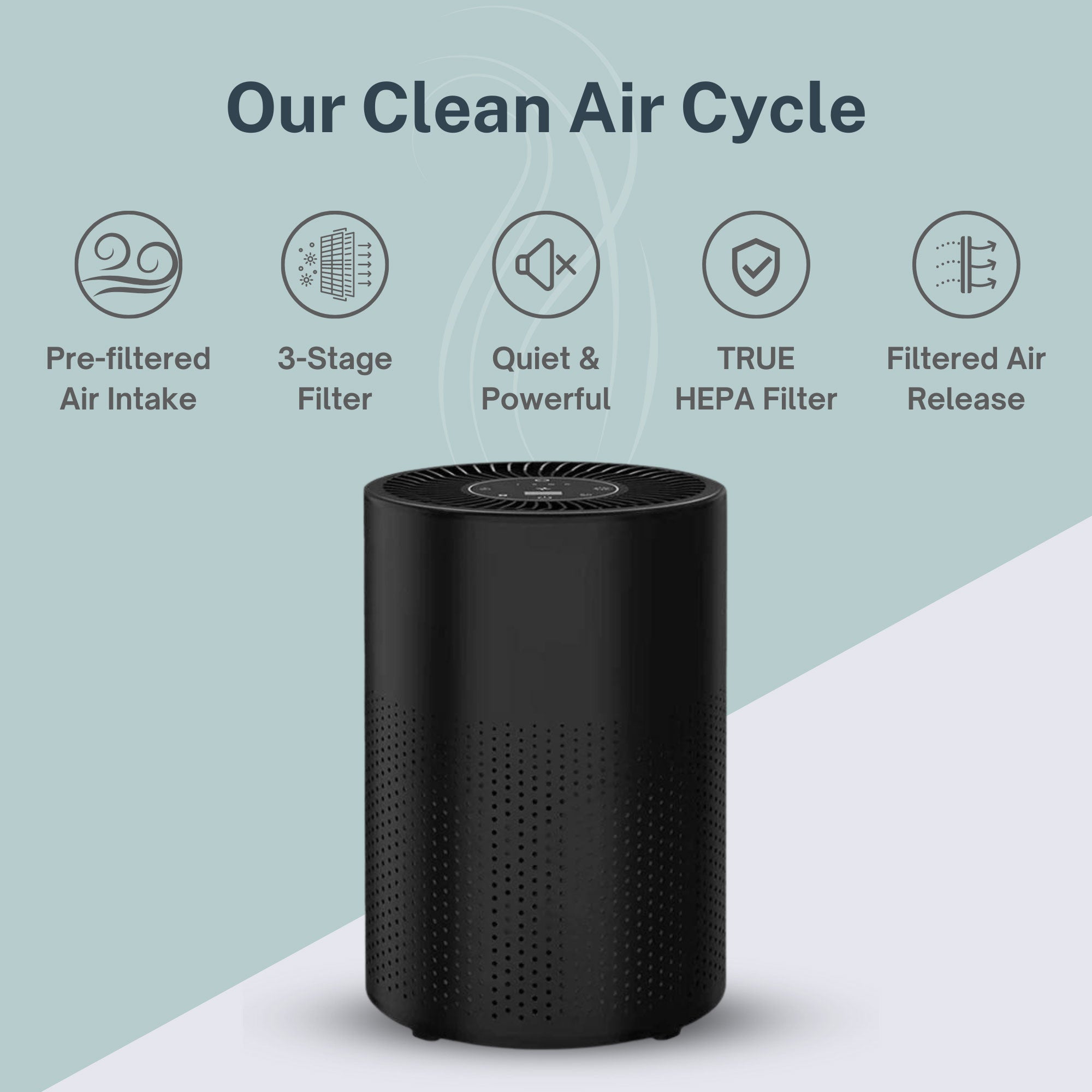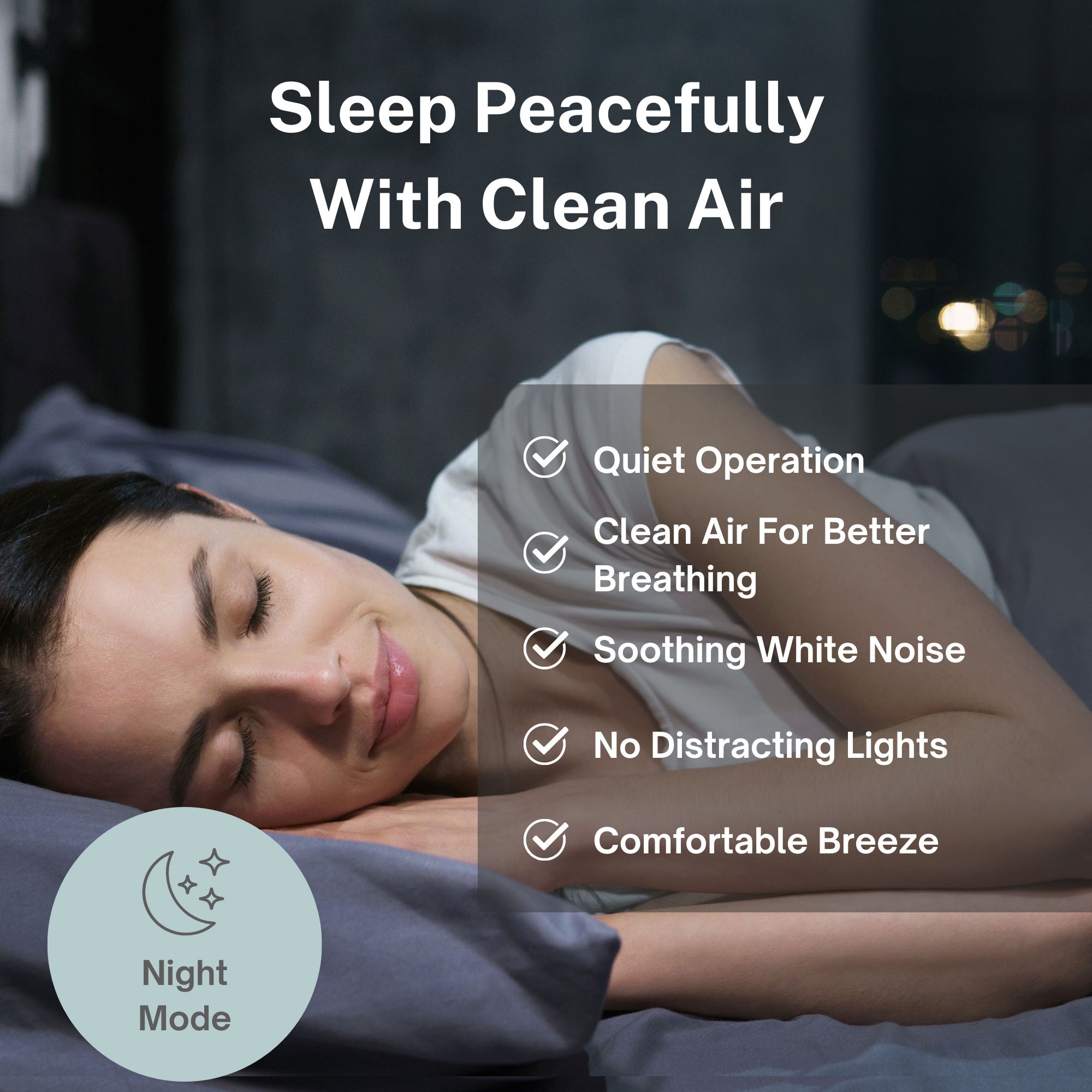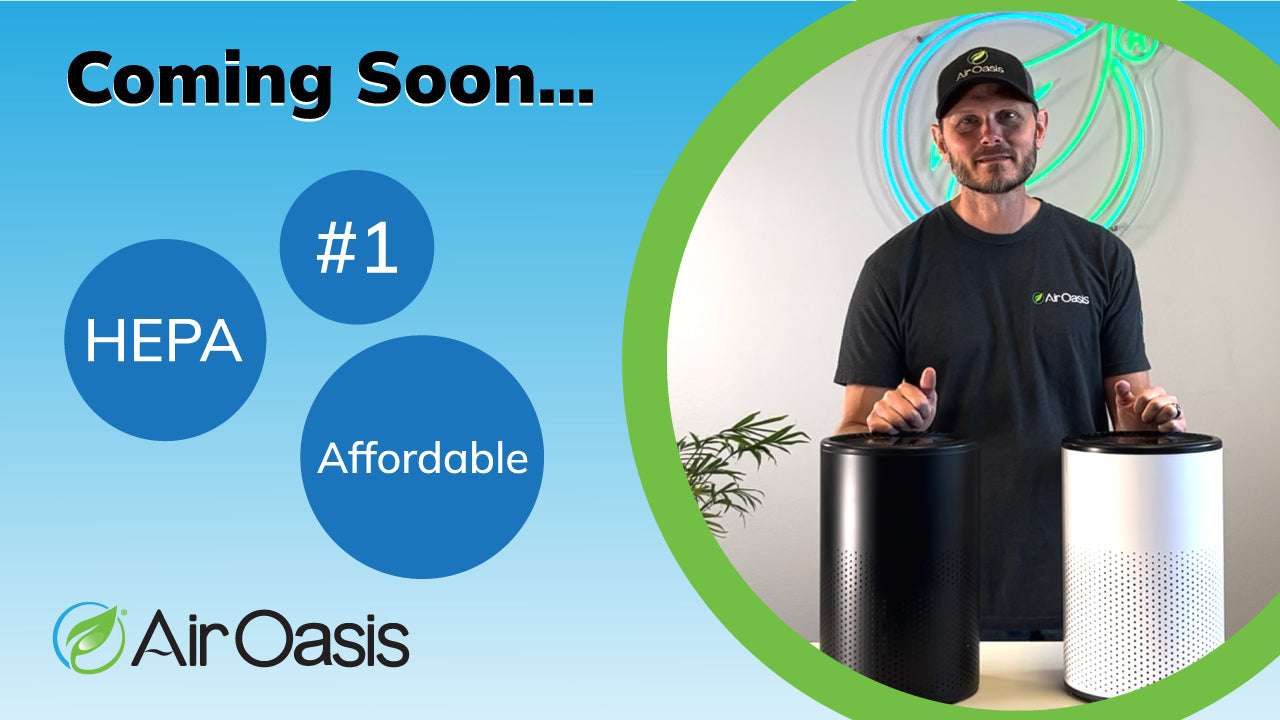Chronic Inflammatory Response Syndrome (CIRS) and other environmental illnesses can significantly impact health and quality of life. Individuals with CIRS and environmental sensitivities often struggle with symptoms like fatigue, headaches, breathing issues, and cognitive dysfunction when exposed to mold and other biotoxins in their environments. Proper mold remediation and air purification solutions are critical for managing CIRS and related illnesses.
In this blog, we will discuss the effects of mold on those with CIRS and environmental illnesses, the importance of indoor air quality, mold remediation techniques, and how air purifiers like the Air Oasis iAdaptAir can help create cleaner, healthier indoor environments.
Understanding Mold and Its Effects
Mold is a type of fungi that grows in damp, humid environments. When excess moisture accumulates indoors due to issues like flooding, plumbing leaks, or humidity buildup, mold can rapidly grow on surfaces like walls, carpets, upholstery, and HVAC systems.
For those with CIRS and environmental sensitivities, exposure to the toxins and spores released by mold can trigger severe reactions. Symptoms commonly associated with mold exposure in this population include:
- Fatigue, weakness, and malaise
- Headaches, lightheadedness, and difficulty concentrating
- Sore throat, cough, and shortness of breath
- Sinus congestion, sneezing, and runny nose
- Itchy, watery eyes and blurred vision
- Joint pain, numbness, and tingling
- Upset stomach, nausea, diarrhea
- Skin irritation and rashes
In addition to these symptoms, mold exposure can also exacerbate chemical and food sensitivities in those with CIRS. It has been shown to contribute to neurological inflammation, autoimmunity, and susceptibility to infections. Clearly, limiting contact with mold is critical for managing CIRS and related environmental illnesses.
Mold Remediation Techniques
If mold is present in your home or office, prompt and thorough remediation is essential. Hiring a professional mold remediation company is the best choice. Here are some best practices for safe, effective mold removal:
- Identifying Mold: Visually inspect all areas exposed to moisture issues. Look along baseboards, under sinks, behind furniture, and on ceiling tiles. Mold often appears discolored, fuzzy, or slimy. An earthy, musty odor may also indicate mold. Consider hiring a professional mold inspector if you are uncertain.
- Fix Moisture Sources: Before removing mold, address any moisture sources like leaks or humidity buildup. Mold will return if the damp conditions that enabled its growth are not remediated. Properly repair any plumbing, roofing, or HVAC issues. Consider installing a dehumidifier to maintain indoor humidity under 50%.
- Contain Work Areas: Close off and seal affected rooms using plastic sheeting. This helps prevent spores from dispersing during the remediation process. Turn off any central HVAC systems as well.
- Remove Materials: Dispose of any materials like drywall or carpeting that have been permeated by mold. According to EPA guidelines, porous items with mold growth larger than 10 square feet should be discarded. Hard surfaces can be scrubbed clean with detergent and water.
- Dry Thoroughly: Use fans, dehumidifiers, and air circulation to fully dry all remediated areas. Materials should be completely dry within 24-48 hours to prevent further mold issues.
- Disinfect: After drying, disinfect all surfaces using an EPA-approved antimicrobial products. This kills any lingering mold spores.
- Make Repairs: Replace removed materials and structurally repair any damage that enabled moisture accumulation. Paint or seal walls, use mold-resistant materials, and ensure proper grading around the home.
With vigilance and proper remediation, indoor mold can be successfully controlled. However, air purification provides an important ongoing defense against mold and other environmental toxins.
Air Purification Solutions for Mold and CIRS
Air purifiers serve a vital role in maintaining clean, healthy air, especially for those with CIRS and environmental illnesses. When selecting an air purification system, keep in mind:
- HEPA Filtration: HEPA filters remove over 99% of particles 0.3 microns and larger. This includes mold spores, dust, and pollen.
- Carbon Filters: Activated carbon absorbs gases, odors, and chemical pollutants that can aggravate CIRS symptoms.
- UV Germicidal Irradiation (UVGI): UVGI light destroys mold, bacteria, and viruses, preventing them from recirculating indoors.
- High CADR Ratings: Clean air delivery rates (CADR) indicate effectiveness at purifying the air. Look for 500+ CADR for mold spores.
- Whole House Capacity: Each contaminated room will need to be remediated, so a portable air purifier is a cost effective solution while delivering great results. Make sure you refer to the recommended room size when selecting your purifier.
With these criteria in mind, Air Oasis air purifiers rise to the top. Designed specifically for mold and CIRS relief, Air Oasis units combine HEPA filters, UV lamps, high airflow, and commercial-grade carbon for medical-quality air purification.
Fight Mold and CIRS with Air Oasis
Exposure to mold and other biotoxins can profoundly impact the health of those with CIRS and environmental illnesses. Though mold remediation helps remove sources, ongoing air purification is essential for keeping indoor air clean and breathable.
With their medical-grade HEPA filters, activated carbon technology, and advanced UV light disinfection, Air Oasis air purifiers are uniquely equipped to remove mold particles and biotoxins down to the smallest levels. Their commercial units filter air throughout large homes and offices for whole-building protection.
Don't let mold derail your health. Breathe easier and take control of your environment with Air Oasis. Find the right air purifier for your needs and create your own clean air oasis!

